Nava Atlas's Blog, page 8
October 10, 2024
The Mother of Social Science: The Works of Harriet Martineau
As a social scientist, Harriet Martineau (1802–1876) published at least fifteen book titles, some of them spanning several volumes.
As a journalist, Martineau made a living by writing for mid-19th century journals and newspapers, encouraging intellectual and social debates across her native England and around the world.
As a writer, she engaged readers of novels, travelogues, biographies, and much more – she probably would have a book in every section of the library if her work were still in print today.
How did Martineau come to be known as the mother of social science, and even more curiously, how did she manage to support herself with the writing of her philosophic and social opinions and observations in a time when the role of women was assigned to the household sphere?
It was an age when, according to Regan Penaluna in How to Think Like a Woman, women were allowed, even encouraged, to work as writers as long as they confined themselves to novels, reviews, translations, and home and hearth. They were encouraged to leave the heavy ideas to male journalists.
How did such a prolific, insightful, and relevant writer become nearly obscure, her work lost in the shadow of the acknowledged great thinkers such as Rousseau, Kant, and her contemporary social scientists?
Harriet Martineau was born in 1802, the sixth of eight children born to textile manufacturer Thomas Martineau and his wife, Elizabeth Rankin Martineau. Harriet’s father’s work provided a middle-class upbringing for the family, but she suffered from things a comfortable lifestyle could not cure.
. . . . . . . . . .
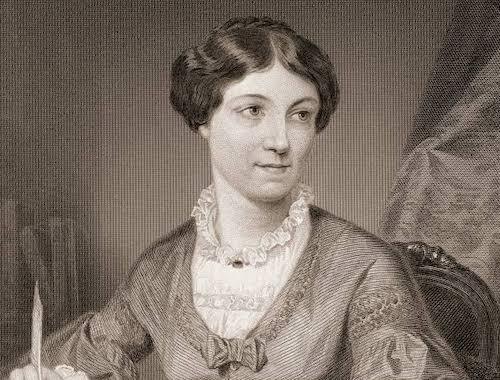
Learn more about Harriet Martineau
. . . . . . . . . .
She endured debilitating fears and panic attacks, chronic stomach ailments, an increasing hearing loss, and had no sense of smell. She wrote in her autobiography:
“Sometimes, I was panic-struck at the head of the stairs, and was sure I could never get down; and I could never cross the yard into the garden without flying and panting, and fearing to look behind, because a wild beast was after me. The starlight sky was the worst; it was always coming down to stifle and crush me, and rest upon my head.”
Martineau also makes mention in her autobiography, of her “daily pain from chronic inflammation of the stomach.” And that “my education was considerably advanced before my hearing began to go.” Also, because she suffered with having no sense of smell, her sense of taste was “exceedingly imperfect.”
She was largely educated at the family’s home in Norwich. Despite her painful stomach discomforts, crippling fears (which she never told anyone about), and her increasing hearing loss which would render her almost totally deaf by the age of twenty — Martineau was able to attend a private school for two years. She also spent a year in a boarding school for girls, where her parents felt the country air would benefit her health.
Women were not allowed to study at a university level, but Martineau continued the self-study she’d practiced since childhood; reading books, asking questions, writing arguments and essays in search of answers, in all subjects she could think of, including those normally taught only to males.
First published writings
Having grown up with strong Unitarian influences, Martineau’s natural first writing endeavor was a submission to the Monthly Respository, a unitarian magazine. Under the pen name of “V. of Norwich,” her first article was published and, along with the praise from her esteemed older brother, swelled her heart with pride at becoming an “authoress.”
She was nineteen years old, and this success sent her back to the empty pages of her notebooks, excited to fill each page with her thoughts. She did not spend a lot of time and effort in revising her work, committing herself to a single copy, as “distinctness and precision must be lost if alterations were made in a different state of mind from that which suggested the first utterance.”
Tragedy struck when Martineau’s older brother, her biggest supporter, died of consumption (tuberculosis). Soon after, her father’s business began to flounder, which landed the family in tenuous financial straits. Her father died in 1826, and though the manufacturing business provided a livable income for the Martineau mother and daughters, its failure in 1829 sent them scrambling to maintain their home.
The industrious Martineau women rose from tragedy like worker bees to a vacant hive, and Harriet was the most tireless of all. She produced needlework by day and did her studying and writing at night. Her spirit soared under these circumstances of seemingly crushing hours and responsibility. In her autobiography, she wrote that the exertion of all her faculties made her very happy and gave her a “deep-felt sense of progress and expansion.”
Illustrations of Political Economy
Spending all those late nights writing into the wee hours paid off when Martineau won £45 in an essay contest sponsored by the Unitarians. She entered and won all three categories: arguments of Unitarianism to the notice of Catholics, Jews, and Mohammedans. Such success spurred her to write her famous series Illustrations of Political Economy, which was itself a great feat in publishing.
The presses at the time (1832) were concerned with a couple of pretty hot political topics — first, that the reform bill was causing much raucousness among citizens, clergy, and politicians alike, and second, that cholera was becoming like a plague from the Middle Ages, decimating the population at an alarming rate.
It was no small victory when Martineau negotiated an agreement with a publisher which stipulated that once 500 subscribers were obtained, the book would go to print. Her success was tremendous with Illustrations of Political Economy, the fictionalized tales illustrating the concept of the new political science.
Subscribers signed up in droves, and the publisher wrote to ask her to make any needed corrections, for Illustrations of Political Economy was going to be sent for a second printing of 5,000 copies. Letters poured in from readers who wanted her to include their hobby or work in the next installment in the series. She began receiving offers from many publishers who wanted to be a part of her future work.
Illustrations of Political Economy grew into a 9-volume series of short stories intended to illustrate the social and political activities taking place in a free market economy. Martineau published these volumes between 1832 and 1834, hoping to make political economy an accessible study for readers of all stripes.
The series is a marriage of politics, economics, social structure, and literature that heralds the birth of Martineau as a philosopher and a much sought after social/political commentator, which is evidenced in the 1836 publication of Miscellanies.
Martineau moved herself and her mother to London in order to better meet the demands of the incoming requests for her increasingly popular work, but almost immediately her desire for writing her observations took her to the United States. From 1834 to 1836 she toured the U.S. for Society in America (1837 ) and Retrospect of Western Travel (1838) and How to Observe Morals and Manners (also 1838) was published. The latter is considered the first systematic methodological writing in sociology.
Persevering through poor health
Since childhood, Martineau’s stomach pains were chronic, and she learned to live with the ailment as best she could. But from the time she arrived home from the United States until 1842, her pain was such that she stayed on her couch, desperately hoping the doctor could find a cure.
During this sick time, she wrote a collection of endearing whimsical children’s stories including The Crofton Boys, The Peasant and the Prince, The Settlers at Home, and Feats on the Fiord.
Although she was under the care of some of the best doctors available, it was believed that her condition would not improve, and Martineau accepted that she would never get any better. When her brother suggested that she give mesmerism a try, Martineau agreed, having run the gamut of local doctors and all other remedies.
Mesmerists were, in many circles, considered quacks, but even today some of their techniques using magnetism and hypnosis are used in the treatment of modern ailments. After a successful treatment with magnetism, she rose from her sick bed and wrote:
“For my part, if any friend of mine had been lying in a suffering and hopeless state for nearly six years, and if she had fancied she might get well by standing on her head instead of her heels, or reciting charms, or bestriding a broomstick, I should have helped her to try; and thus was I aided by some of my family and by a further sympathy in others, but two or three of them were induced to regard my experiment and recovery as an unpardonable offence, and by them I never was pardoned.” (Autobiography, Volume 2)
A fevered pitch of writing and translationUpon healing from her illness, Martineau moved to the countryside, where her writing took on a fevered pitch, as if making up for lost time (though her work only slowed down during her illness and she never did fully stop writing). After publishing several popular books and articles, she translated Auguste Comte’s famous social work, and titled it The Positive Philosophy of Auguste Comte, Freely Translated and Condensed, 2 volumes, (1853).
Her translation won her great esteem, even from Compte himself, and made a significant contribution to the scholarly conversation on positivism in Britain. Having often been referred to as the Father of Social Science, Martineau’s translation of Comte’s work, coupled with her own social commentary, earned her the title of Mother of Social Science.
For the next twenty-three years, Martineau worked her land, kept her house, and published more books, writing her thoughts and observations up to the very day she died and amassing quite an extensive bibliography. In part:
1832–1834. Illustrations of Political Economy. 25 nos. in 6 vols1836. Miscellanies. 2 vols.1837. Society in America. 3 vols. London: Saunders & Otley. Abridged ed. by Seymour Martin Lipset1838. Retrospect of Western Travel. 2 vols.1838. How to Observe Morals and Manners.1839. Deerbrook. A novel1840 The Hour and the Man (a novel)1841 The Playfellow. (a series of children’s stories)1844. Life in the Sick-Room. 1848. Eastern Life, Present and Past1859. England and Her Soldiers1861. Health, Husbandry, and Handicraft1877. Harriet Martineau’s Autobiography, edited by Maria Weston Chapman. 2 vols.1983. Harriet Martineau’s Letters to Fanny Wedgewood, edited by Elisabeth S. Arbuckle(In addition, more than 1,500 newspaper columns, and several magazine articles. Not listed)
Co-wrote/translated:
Atkinson, Henry George, and Harriet Martineau. 1851.Letters on the Laws of Man’s Nature and DevelopmentComte, Auguste. The Positive Philosophy of Auguste Comte,
translated and condensed by Harriet Martineau. 1853 Harriet Martineau’s legacy
Martineau wrote about such topics as Unitarianism, abolitionism, feminism, disability, social science, atheism, and more. She was a biographer and critic who spared nothing from the printing press as she wrote about education, history, husbandry, legislation, manufacturing, mesmerism, occupational health, philosophy, political economy, religion, slavery, and travel.
Her most popular work in the United States today is Society in America, an exploration of the political economy of America with special interest in the slavery of the South. After a biographical introduction detailing Martineau’s travels and social interactions (unencumbered by her ear trumpet), page 3 states,
“The United States have indeed been useful in proving these two things, before held impossible; the finding of a true theory of government, by reasoning from the principles of human nature, as well as from the experience of governments; and the capacity of mankind for self-government.”
After that assent, the rest of the book measures and probes the prisons, schools, factories, plantations, farms, tribal establishments, and literary and scientific institutions, from north to south and east to west of the United States in order to find if life, liberty, and the pursuit of happiness were actively apparent among everyone in equal measure.
Finding this not to be the case, Martineau aligned herself with the abolitionist movement. She sold embroidery to donate money to abolition and worked for the the Anti-Slavery Standard until the end of the Civil War. It was in the United States, too, where Martineau was further inspired to reveal gender inequality and its effects on society, championing women’s suffrage.
In 1846 Martineau toured Egypt, Palestine, and Syria, focusing her analytical eye on religion and customs. Her later writings reflect that she became an atheist during this time.
One of Martineau’s most downloaded works on Project Gutenberg is Life in the Sick-room: Essays. In this work, Martineau reaches out to encourage others: “We know and feel, to the very centre of our souls, that there is no hurry, no crushing, no devastation attending Divine processes.” (Dedication).
Harriet Martineau’s vast compilation of work, opinions ranging from politics, to philosophy, to pain, was, and still is, sought after reading fodder among many social scientists. We might not find Martineau’s work among the scholars while browsing the philosophy section at the bookstore, but some of her books can be found at online books stores and her many of her titles have been made into e-books as well.
It is indeed is a glaring slight that her work is not readily found in the library stacks among the great thinkers, but its digital availability can be seen as a social redemption of sorts. I’m sure we have the social scientists to thank for that.
Contributed by Tami Richards, a history enthusiast and freelance writer living in the Pacific Northwest. More of her work can be found here.
Further reading and sourcesHarriet Martineau’s Autobiography, Volume 1, 1855Penaluna, Regan. How to Think Like a Woman, Grove Press, 2024Harriet Martineau on Project GutenbergInternetarchive.org, Harriet Martineau,by Miller, Florence Fenwick Miller, 1887Openlibrary.orgThe post The Mother of Social Science: The Works of Harriet Martineau appeared first on Literary Ladies Guide.
October 1, 2024
Five women translators to celebrate on International Translation Day
International Translation Day falls on September 30 each year, but translators should be celebrated year round for what they contribute to how literature becomes a common thread between cultures.
Here are five women translators of the past whose work was groundbreaking, contributing to gender equality, education for all, abolitionism and scientific knowledge across borders and languages.
. . . . . . . . . . . .
Claudine Picardet,chemist and scientific translator
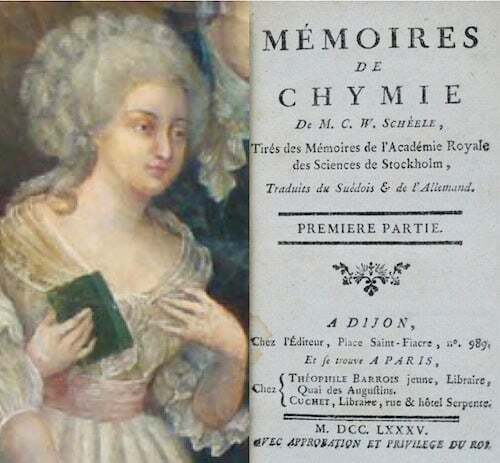
Claudine Picardet (1735–1820) was a French chemist, mineralogist and meteorologist living in Dijon, a town in eastern France. She was the only woman at the Dijon Academy, and the only scientist who was proficient in five foreign languages (Latin, English, Italian, German, Swedish).
Claudine decided to translate a number of books and articles into French that were written by leading scientists of her time, for the benefit of her colleagues.
She translated three books and dozens of scientific papers originally written in Swedish (works by Carl Wilhelm Scheele and Torbern Bergman), in English (works by John Hill, Richard Kirwan and William Fordyce), in German (works by Johann Christian Wiegleb, Johann Friedrich Westrumb, Johann Carl Friedrich Meyer and Martin Heinrich Klaproth) and in Italian (works by Marsilio Landriani).
Claudine Picardet’s translations were essential for the dissemination of scientific knowledge during the Chemical Revolution, a movement led by French chemist Antoine Lavoisier, often called the Father of modern chemistry.
She also hosted renowned scientific and literary salons in Dijon and in Paris, where she moved later on, and actively participated in the collection of meteorological data.
. . . . . . . . . . . .
Sarah Austin, tireless advocateof public education for all
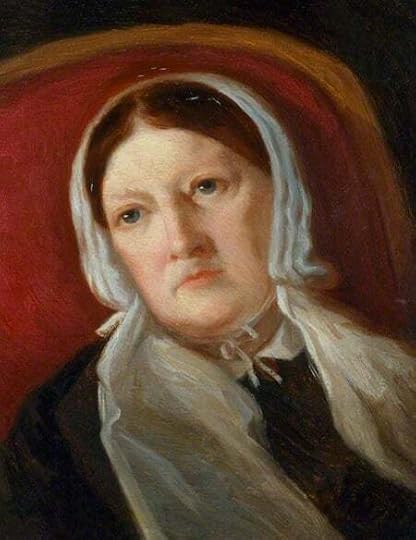
As a child, Sarah Austin (1793–1867) studied Latin, French, German and Italian in her native England. After marrying legal philosopher John Austin in 1819, she became a translator and editor, and corresponded extensively with many writers. The couple moved from London to Bonn, Germany, in 1827, living largely on Sarah’s income.
Sara translated into English a few works written by her German and French contemporaries, for example Characteristics of Goethe from the German of Falk, von Müller, etc., with notes, original and translated, illustrative of German literature (in 1833), as well as books by German philosopher Friedrich Wilhelm Carové (in 1834), German historian Leopold von Ranke (in 1840) and French historian François Guizot (in 1850).
One of her translations was the Report on the State of Public Instruction in Prussia, written in 1832 by French philosopher Victor Cousin for the French Minister of Public Education.
In the preface to her translation (published in 1834), she personally pleaded for the cause of public education. She also advocated for a national system of education in England in a pamphlet published in 1839 in the Foreign Quarterly Review.
She regularly stood for her intellectual rights as a translator, writing that “It has been my invariable practice, as soon as I have engaged to translate a work, to write to the author of it, announcing my intention, and adding that if he has any correction, omission, or addition to make, he might depend on my paying attention to his suggestions” (in “Sarah Austin,” Dictionary of National Biography, vol. 2, 1885).
. . . . . . . . . . . .
Clémence Royer (1830-1902),translator of Charles Darwin’s seminal book
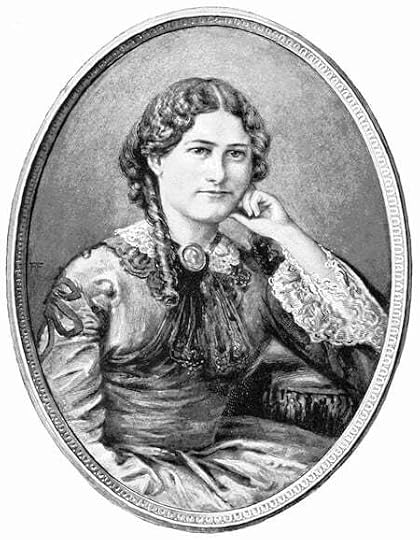
Clémence Royer (1830–1902) was a self-taught French scholar who undertook the major task of translating English naturalist Charles Darwin’s seminal book On the Origin of Species (first published in 1859). His concept of evolutionary adaptation through natural selection was attracting widespread interest outside Britain, and Darwin was eager to have his book translated into French.
In the first French edition (1862), based on the third English edition, Clémence Royer went beyond her role as a translator, with a 60-page preface expressing her own views and many detailed explanatory footnotes.
Her own views had more in common with French naturalist Jean-Baptiste Lamarck’s ideas than with Darwin’s ideas. After reading her translation, Darwin was unhappy with her preface and footnotes and, according to him, her lack of knowledge in natural history.
Darwin requested the correction of some errors and inaccuracies in the second French edition (1866). The third French edition (1873) was produced without Darwin’s consent, with a second preface that also made Darwin unhappy, and an appendix that forgot the additions to the fourth and fifth English editions and only included the additions to the sixth English edition (published in 1872).
After three French editions (1862, 1866, 1873) published by Guillaumin, the fourth French edition (1882) was published by Flammarion the year of Darwin’s death, and stayed popular until 1932. Her controversial translation brought fame to Clémence Royer, who extensively wrote and lectured on philosophy, feminism and science, including on Darwinism.
. . . . . . . . . . . .
Mary Louise Booth, translator of major booksby anti-slavery advocates
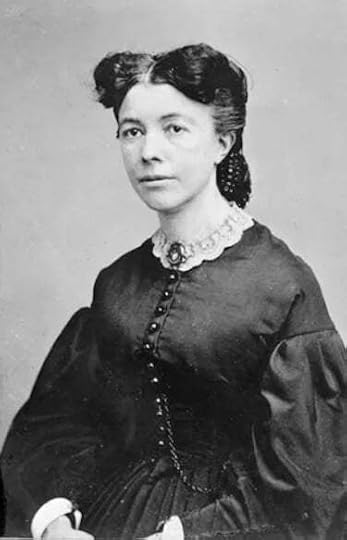
Born in Millville (now Yaphank) in the State of New York, Mary Louise Booth (1831–1899) was of French descent on her mother’s side.
After moving to New York City at the age of 18, she wrote many pieces for various newspapers and magazines, and translated around 40 books from French into English, including works by writers Joseph Méry and Edmond François Valentin About, and by philosopher Victor Cousin.
She assisted Orlando Williams Wight, a fellow American translator, in producing a series of translations of French classics. She also wrote a History of the City of New York (1859) that became a bestseller.
When the American Civil War started in 1861, she translated French anti-slavery advocate Agénor de Gasparin’s book Uprising of a Great People (just published in France) in a very short time by working twenty hours a day for one week. Her translation was published in a fortnight by American publisher Scribner’s and widely distributed.
Then she translated Gasparin’s America before Europe (translation published in 1861), as well as books by other anti-slavery advocates, including Pierre-Suzanne-Augustin Cochin’s Results of Emancipation and Results of Slavery (1862) and Édouard René de Laboulaye’s Paris in America (1865).
She received praise and encouragement from President Abraham Lincoln, Senator Charles Sumner and other statesmen for her invaluable contribution towards the abolition of slavery.
She also translated other books by the same authors, including Gasparin’s religious works (written with his wife) and Laboulaye’s Fairy Book, as well as Fairy Tales by educator Jean Macé, History of France by historian Henri Martin, and Provincial Letters by philosopher Blaise Pascal.
She became the first editor-in-chief of the newly created magazine Harper’s Bazaar from 1867 until her death in 1899. Under her leadership, the magazine steadily increased its circulation and influence to become a household name. After struggling financially for decades as a writer and translator, she finally earned a larger salary than any woman in America.
. . . . . . . . . . . .
Alix Strachey,translator of Freud’s complete works
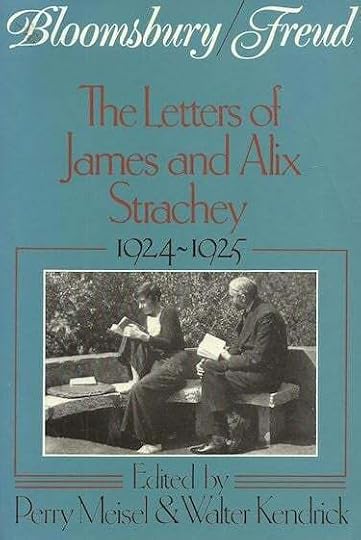
Alix Strachey (1892–1973), an American-born English psychoanalyst, spent her whole life working alongside her husband, James Strachey, who was a fellow English psychoanalyst. Shortly after getting married in 1920, they left for Vienna, Austria, and spent two years studying psychology with famed Austrian psychoanalyst Sigmund Freud.
At Freud’s request, they first translated some of his articles from German into English. Then they worked tirelessly for many years (from 1953 to 1966) to translate his complete works (written between 1886 to 1939), in collaboration with Anna Freud, Freud’s youngest daughter, and with the help of English musicologist and translator Alan Tyson.
The 24-volume translation was published in 1953-74 by Hogarth Press in London under the title The Standard Edition of the Complete Psychological Works of Sigmund Freud, with James Strachey as its editor. Also known to scholars as The Standard Edition (SE), it included introductions to Freud’s various works and extensive bibliographical and historical footnotes, It quickly became the reference edition of Freud’s works in English, and a reference work for translations into other languages.
. . . . . . . . . . . .
More women translators are celebrated in the ebook Some Women Translators of the Past (July 2024)
Also by Marie Lebert: 10 Lost Ladies of Literary Translation
Article written by Marie Lebert (edited by Nava Atlas). Marie Lebert is a French translator and librarian who has worked for international organizations and global projects in several countries. She is currently based in Australia. She writes about translation and translators – past and present — with a focus on women translators.
Women translators have been forgotten for too long before being recently acknowledged in Wikipedia thanks to its many contributors. Marie holds a PhD in linguistics (digital publishing) from the Sorbonne, Paris. Her articles, essays and ebooks are available online in English, French and Spanish at Marie Lebert.
The post Five women translators to celebrate on International Translation Day appeared first on Literary Ladies Guide.
September 30, 2024
Bad Girl by Viña Delmar, a 1928 Novel That Was “Banned in Boston”
In the 1920s, urban American women experimented with sexual freedom more openly than ever. Popular novels by writers — male and female — held up a mirror to the times. Despite its provocative title, the forgotten bestselling 1928 novel, Bad Girl by Viña Delmar, wasn’t one of them.
Dorothy, or “Dot,” as she’s familiarly called, has one instance of premarital sex, marries the guy (who’s not a bad sort, but not very bright), and after a respectable period of time, becomes pregnant. The novel is then preoccupied with her pregnancy and childbirth. The cover of a later edition, at right, sensationalizes the contents, as was typical of pulp novels.
There’s nothing scandalous about this middling novel, but the realities of a young wife’s pregnancy and her experiences in a birthing hospital were enough to catch the eyes of The New England Watch and Ward Society.
This New England-based organization whose mission was censorship of books and the performing arts was most active from the late nineteenth century through the 1920s.
For the most part, publishers welcomed a book being “banned in Boston,” as this kind of controversy boosted sales. Winning these censorship cases in court, however, really did mean that the books in question couldn’t be sold in Massachusetts under severe penalty of law.
. . . . . . . . . . . .
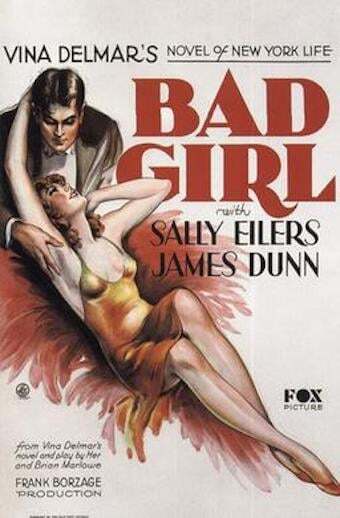
. . . . . . . . . . . .
Being banned in Boston drove Bad Girl onto national bestseller lists and helped make its 23-year-old author an overnight sensation. The 1931 pre- Hayes Code film adaptation received great reviews, making the most of its thin material and breathing new life into the novel’s notoriety just a few years later.
“Bad Girl is Popular” read the headline of a brief blurb that was syndicated to several newspapers in 1928:
Vina Delmar’s novel, “Bad Girl” which attracted so much attention before and after it was “banned in Boston,” has reached (so its publishers, Harcourt, Brace and Company announce) its seventh large printing, not including the 40,000 to the Literary Guild. During the last two weeks in has been reported to be the best selling novel in the country, supplanting, at least for the present, “The Bridge of San Luis Rey.”
Reviewers were, if not bowled over, generally kind to the novel and its young author. Following is a fairly typical review from the period, after which are two articles about its banning in Massachusetts.
. . . . . . . . . .
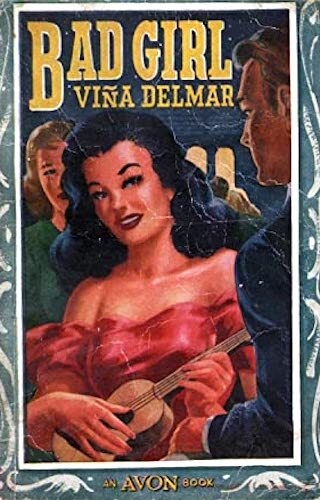
Another sensationalized cover of Bad Girl. See also —
Her First Time: Seduction and Loss of Innocence in 1920s Women’s Novels
. . . . . . . . . .
Bad Girl is a Poignant Transcript of LifeTulsa Daily World, Tulsa, Oklahoma, June 17, 1928: Viña Delmar has written a rough and honest tale of loving. Bad Girl by Viña Delmar has been so widely heralded as a precocious first novel that a cautious reader is to be pardoned if it has been catalogued among books that can wait. And yet caution, in this instance, is totally unnecessary.
A first novel it may be, but it is free from the taint of precocity, and from the blight of conscious straining for style. It is a spontaneous and honest piece of writing. It concerns the meeting, mating, and marriage. It depicts one year of married life of two young people from that strata whose constituents consider themselves educated and ready for life when the eighth grade is behind them.
Mrs. Delmar’s Dorothy is an eager, slim, pliable young thing exactly like all the other millions of lipsticked, bobbed, silk-stockinged young women whose bright eyes shone with life. Her Eddie is an unbelievably sensitive, consistently staunch youth, outwardly like all the other swaggering boys who seek and accept the challenge of bright eyes.
Eddie and Dorothy (often referred to as Dot) pick each other up on an excursion boat. For all the shield of their rude, self-protective banter they understand one another. They marry and have a child.
Dorothy and Eddie are real people. So is Edna, the strange girl who Dorothy’s brother loved, so far as he could love. And so are the sly-eyed, perfumed Maude, the noisy Sue, the kind, matter-of-fact doctors who took Dorothy through the hell of labor into the blessed haven of her motherhood.
Viña Delmar has written a poignant, moving story of honest thought and action. There’s no reticence in Bad Girl. Perhaps that’s why Boston banned it. But its frankness is that of reality, and is not offensive. The book takes its its title form Dot and Eddie’s prenuptial adventure, out of which she emerged panic-stricken an afraid, and Eddie came out of grim and purposeful.
There’s something intensely appealing about Eddie. He is sullen, he is rude, he is profane, but underneath this rough exterior is a man who is tender, wonderfully kind, oddly wistful, and ready to sacrifice anything for the little flame of a girl he married.
When Dot found out she was to have a baby, she trembled for fear that Eddie didn’t want it. She was ready to go any lengths if he didn’t. And Eddie, interpreting her fear as an aversion to the baby, thought that it was Dot who didn’t want it. He feigned disgust at the thought of a third member coming into the family. Love makes such strange tangles sometimes!
Anyone who could produce such a vital book as this one will go a long way. The reader feels that Viña Delmar knows what she’s writing about in this, her first book — that she has felt the pain and joy that color it. And knowing and feeling as she does, she was able to write about simple and elemental things.
Bad Girl isn’t, from any standpoint, an important book. But it is a true one, which makes it good.
. . . . . . . . . . .
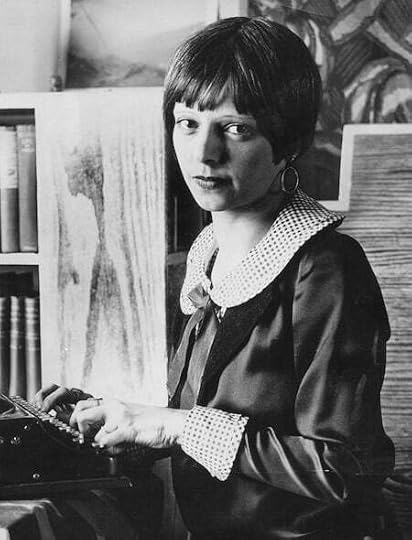
Viña Delmar in 1928
. . . . . . . . . . .
The Springfield Daily Republican (Springfield, Massachusetts), May 4, 1928: Literary Guild selection novel by Viña Delmar, former actress, held by booksellers to be “Actionable” under Massachusetts. “Obscenity” ignores truth, says author.
Bad Girl, a novel that raised Vina Delmar to literary fame at the age of 23, has been banned from sale in Boston. Harcourt, Brace & Co.. the publishers. received notice today from the Boston Booksellers’ association that the book is “actionable.”
The association. by agreement with the district attorney. has the power to rule on the counters of its members any books which it believes violate the Massachusetts “obscenity” law.
When Miss Delmar was informed of the action. she said Boston ignores the truth. Propagation is evidently obscene, The Lord was less cautious in his personal contacts than the Boston book banners in their reading. They are witch burners, truth hiders, and killers of the seeds of sincerity.
Bad Girl, by being barred from Boston. now joins the company of Elmer Gantry, An American Tragedy, The Plastic Age, and other recent novels that have won praise elsewhere.
Bad Girl was selected by the Literary Guild as its book for the month of April. This made Miss Delmar. a former actress and writer of short stories. famous overnight. She contends that Bad Girl is true to the lives or the people in her neighborhood” and that she took all the characters from her acquaintances.
The heroine in the book was married at the age of seventeen and the story goes on with her married life until the first baby is born.
Boston Bans New Novel, Bad Girl; Editor Is Angry
The Dispatch (Moline, Illinois). May 12, 1928: Bad Girl. a new novel by Viña Delmar, has been banned in Boston, The Watch and Ward Society having disapproved it. The Boston Booksellers’ association has sent word to Harcourt. Brace & Co. of New York that they will not handle the book.
“The book has one pretty strong chapter in it,” said a leading Boston publisher, “and the Watch and Ward society, I’m frank to say, under Massachusetts statutes anyone who sold it could be prosecuted. We care neither to push out such books, nor to furnish our contemporaries over in New York with just much free advertising.
“We read the book, of course, before submitting it to the Watch and Ward society. The banning by the society didn’t cause even a ripple among us. Dare say we will sell plenty of books without adding this one to our stock.”
“The exploitation of ‘Banned in Boston’ or ‘puritan Boston’ gives any such book a certain boost in New York. I suppose. but the New York publishers are welcome to it.”
Silly, says editor
A letter from the Boston Booksellers’ association was received by Harcourt, Brace & Co. publishers. notifying them that Viña Delmar’s novel, Bad Girl was actionable. No other reason was given by the association for its refusal to handle the book in Boston.
The author of the book is twenty-three, a former usher, stenographer, and vaudeville actress. Its banning was termed an act of “a crazy bunch of madmen” by Harrison Smith, editor for Harcourt, Brace & Co.
“What’s the use?” he said. Asked if the prohibition from sale would be contested. “It’s incredible that the book should be thought obscene, even in Boston. A baby is born in it; can’t babies be born in books Boston reads?”
The theme of the novel—Mrs. Delmar’s first—is pregnancy. A Bronx stenographer, Dot, flirts with a “white Harlem” radio mechanic, Eddie. on board a steamer. They marry, and Dot, believing her husband does not want a baby, suffers in silence because she is pregnant, Eddie, too, thinking his wife dreads childbirth, suffers quietly. The birth, it’s hinted at the very end, will clear up these misunderstandings.
. . . . . . . . . . .
More about Bad Girl by Viña Delmar
Full text on Internet Archive
Viña Delmar, Flapper Fiction, and Snappy Stories Magazine
The post Bad Girl by Viña Delmar, a 1928 Novel That Was “Banned in Boston” appeared first on Literary Ladies Guide.
September 7, 2024
Flora Thompson, Author of Lark Rise to Candleford
Flora Thompson (December 5, 1876 – May 21, 1947), was an English novelist and poet, best known for her semi-autobiographical trilogy Lark Rise to Candleford.
The commercial and critical success of the books — Lark Rise, Over to Candleford, and Candleford Green — is such that they have never been out of print, and were adapted by the BBC for a four-season series in 2008.
Early life: The origins of Candleford
Flora Jane Timms was born in the rural hamlet of Juniper Hill, near Brackley, Oxfordshire. Her father, Albert, was a stonemason, whose ambitions to become a sculptor had been thwarted by his drinking and gambling.
Flora later remembered him as “a terrible spendthrift … he never seemed to grasp the fact that he was responsible for our upbringing … He had all of the bad qualities of genius and a few of the good ones.”
Her mother, Emma, had gone into service at an early age and had worked as a nursemaid before she married Albert. She gave birth to ten children between 1875 and 1898, but only six survived beyond the age of three. Despite her challenging life, Emma was a talented storyteller and delighted in creating imaginary worlds for her children through songs, games, and stories.
When Flora was growing up, Juniper Hill was barely touched by the Industrial Revolution that was sweeping across England. It was still a place where farm laborers earned a subsistence wage, and where women still drew water from a communal well.
Later, in the first of her famous trilogy, Lark Rise, Flora described it as “bare, brown, and windswept for eight months out of the twelve … only for a few weeks in later summer had the landscape real beauty.”
Reading, writing, and the post office
Flora attended school in Cottisford, a mile-and-a-half walk away from Juniper Hill. On those walks, she developed an intimate knowledge of the natural world that surrounded her, which she would later use in her writing. She left school at age twelve, like the other children in the hamlet, expected to go into service.
Her mother assumed that Flora would become a nursemaid like herself and was quietly disappointed when Flora showed no interest in babies. Instead, she preferred to read and write.
Flora left home at age fourteen to work in the Post Office in nearby Fringford, where her duties included selling stamps, working the new telegraph machine, and sorting letters.
Despite the lack of formal education, writing was already central to her life. Later, she would say that she “could not remember the time when [she] did not wish or mean to write,” and that she “never left off writing essays for the pleasure of writing.” She was also a voracious reader, and while lodging in Fringford took out a library ticket at the Mechanics Institute in a nearby town and read her way through Austen, Trollope, Scott, and Dickens.
In 1898 Flora left Fringford to work at the post office in Grayshott, Hampshire, where she served some of the well-known literary figures of the time who lived in the area, including George Bernard Shaw and Arthur Conan Doyle. Overawed by their celebrity, she nearly abandoned her own writing. It was likely here that she met her future husband, John William Thompson, a post office clerk and telegraphist from Aldershott (also in Hampshire).
. . . . . . . . . .
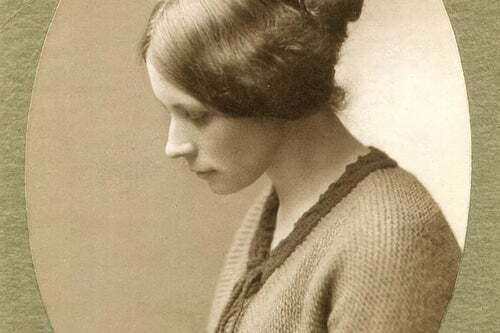
. . . . . . . . . .
Marriage (and writing in secret)By 1902 Flora was working at the post office in Twickenham. She married John Thompson on January 7, 1903, at the local St Mary’s Church. The couple then moved to Winton on the outskirts of Bournemouth, where two of their three children (Basil and Winifred) were born.
There they stayed there until 1916 when John became Postmaster at Liphook in Hampshire. Their third child, Peter, was born there as well, when Flora was forty-one. Another move followed in 1928, to Dartmouth in Devon, where the family settled.
Flora realized that her husband’s family did not approve of her “cottage origins” and regarded her passion for reading and writing as a waste of time. John did not encourage her writing either, so when the children were past infancy, she took to writing in secret.
Nature writing, literary essays, and poetry
In 1911, Flora had her first writing success when her essay on Jane Austen won a women’s newspaper competition. She subsequently sent the same newspaper another article and a short story, both of which were accepted and for which she received payment.
This seemed to precipitate a change of heart by her husband: so long as her writing paid and didn’t interfere with her responsibilities at home, then it could be tolerated.
She went on to write several short stories and newspaper articles, and when she was living in Liphook contributed two long series of articles to the Catholic Fireside magazine. One of these comprised literary essays, and the other consisted of nature writing.
Both series came from her own enthusiasm and dedication: she was a self-taught naturalist from childhood, and her literary essays were also the result of her own private study, carried out mainly in the newly established free public library system. These nature articles later went on to be collected in Margaret Lane’s A Country Calendar (1979) and in Julian Shuckburgh’s The Peverel Papers (1986).
Flora’s true real ambition was to be a poet. She lacked confidence — partly, perhaps, because of her childhood poverty and lack of formal education. She later said, “To be born in poverty is a terrible handicap to a writer. I often say to myself that it has taken one lifetime for me to prepare to make a start. If human life lasted two hundred years, I might hope to accomplish something.”
She was encouraged by Ronald Campbell Macfie, a Scottish physician and poet who had admired her writing in The Literary Monthly. This was an important friendship — the only real literary friendship she ever had — and it resulted in her first published book, a collection of poems titled Bog Myrtle and Peat, in 1921.
. . . . . . . . . .

. . . . . . . . . .
Lark Rise to CandlefordFlora continued to write through the family’s move to Dartmouth. From 1925 until the outbreak of war in 1939 she ran a mail-based writing club called the Peverel Society, in which members shared their own work and critiqued the work of others.
It wasn’t until 1935 that she began to write about her Oxfordshire childhood — a vanishing world of rural and agricultural traditions — with the intention of giving “a true picture of the people and time … to describe things exactly as they were, without sentimentalizing or dramatizing.”
She sent the result to Oxford University Press, who accepted it for publication. Lark Rise was published in 1939, Over to Candleford in 1941, and Candleford Green in 1942. They were first issued together as a trilogy in 1945 under the title Lark Rise to Candleford.
The books tell the lightly fictionalized story of three closely-related Oxfordshire communities — a hamlet, a nearby village, and a small market town (based on Juniper Hill, Cottisford and Fringford) — and have often been used as sources for the social history of the period. Gillian Lindsay has written that “Few works better or more elegantly capture the decay of Victorian agrarian England.”
This success came relatively late in Flora’s life — she was by then in her sixties, and she claimed that by that point she was “too old to care much for the bubble reputation.” She had never been a part of any literary circles, preferring to keep to the fringes, and was surprised at how popular the trilogy was when so much of her writing had long been ignored.
She continued to write, although no further books were published until after her death. Heatherley, an account of her time in Grayshott and seen as a sequel to Lark Rise to Candleford, was unpublished until Margaret Lane included it in A Country Calendar. Her final book, Still Glides the Stream, was published after her death in 1948.
Her later work never achieved the popularity of Lark Rise to Candleford. The trilogy has never been out of print and has been adapted for both stage and television: two musicals based on the books, Lark Rise and Candleford, were performed at London’s National Theatre in 1978 and 1979, and a four-season series was produced by the BBC starting in 2008.
Last years
In 1940, Flora’s husband John retired from the post office, and the couple moved to a cottage in Brixham, Devon. By this time their oldest son Basil had left England for Australia, while their daughter Winifred was a nurse in Bristol. Their youngest son Peter was killed in 1941 while serving in the merchant navy, when his ship was torpedoed in the Atlantic.
Flora never recovered from the loss of her son. She died of a heart attack at home in 1947, and her ashes are buried at the Longcross cemetery, Dartford, Devon.
. . . . . . . . .
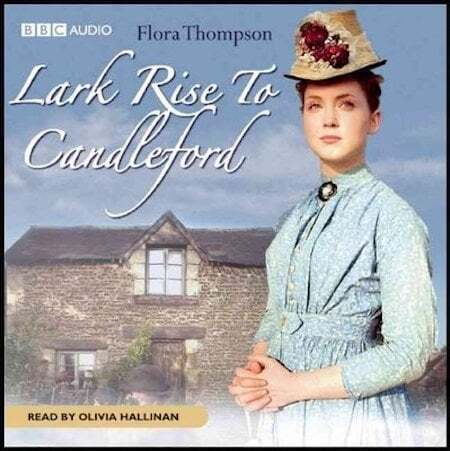
. . . . . . . . . . .
Contributed by Elodie Barnes. Elodie is a writer and editor with a serious case of wanderlust. Her short fiction has been widely published online and is included in the Best Small Fictions 2022 Anthology published by Sonder Press. She is Books & Creative Writing Editor at Lucy Writers Platform, she is also co-facilitating What the Water Gave Us, an Arts Council England-funded anthology of emerging women writers from migrant backgrounds. She is currently working on a collection of short stories, and when not writing can usually be found planning the next trip abroad, or daydreaming her way back to 1920s Paris. Find her online at Elodie Rose Barnes.
More about Flora ThompsonMajor Works
Poetry
Bog Myrtle and Peat (1921)Novels
Lark Rise (1939)Over to Candleford (1941)Candleford Green (1943)Lark Rise to Candleford (1945 — the three novels published as a trilogy)Still Glides the Stream (1948, posthumous)Heatherley (1944, posthumous)Nature writing
The Peverel Papers (abridged,1986; complete, 2008)Biography
Dreams of the Good Life: The Life of Flora Thompson and the Creation of
Lark Rise to Candleford by Richard Mabey (2015)
The post Flora Thompson, Author of Lark Rise to Candleford appeared first on Literary Ladies Guide.
September 3, 2024
The World She Edited: Katharine S. White at The New Yorker
In the summer of 1925, Katharine Sergeant Angell walked into The New Yorker’s midtown office and left with a job as an editor. The magazine was only a few months old. Over the next thirty-six years, White would transform the publication into a literary powerhouse.
This towering but behind-the scenes figure in the history of 20th-century literature finally gets the first-rate biography she deserves in The World She Edited: Katharine S. White at The New Yorker by Amy Reading (Mariner Books, September 3, 2024; thanks to Mariner Books for supplying the content of this post).
In The World She Edited, Amy Reading brings to life the remarkable relationships White fostered with her writers and how these relationships nurtured an astonishing array of literary talent.
She edited a young John Updike, to whom she sent seventeen rejections before a single acceptance, as well as Vladimir Nabokov, with whom she fought incessantly, urging that he drop needlessly obscure, confusing words.
White’s biggest contribution, however, was her cultivation of women writers whose careers were made at The New Yorker—Janet Flanner, Mary McCarthy, Elizabeth Bishop, Jean Stafford, Nadine Gordimer, Elizabeth Taylor, Emily Hahn, Kay Boyle, and more.
She cleared their mental and financial obstacles, introduced them to each other, and helped them create now classic stories and essays. She propelled these women to great literary heights and, in the process, reinvented the role of the editor, transforming the relationship to be not just a way to improve a writer’s work but also their life.
Based on these years of scrupulous research, acclaimed author Amy Reading creates a rare and deeply intimate portrait of a prolific editor—through both her incredible tenure at The New Yorker, and her famous marriage to E.B. White—and reveals how she transformed our understanding of literary culture and community.
About Amy Reading: Amy Reading is the recipient of fellowships from the National Endowment of the Humanities and the New York Public Library. She is the author of The Mark Inside: A Perfect Swindle, a Cunning Revenge, and a Small History of the Big Con. She lives in upstate New York, where she has served on the executive board of Buffalo Street Books, an indie cooperative bookstore, since 2018.
Fascinating facts about Katharine S. White
She hired E.B. White; then reader, she married him
Katharine hired E.B. White (who went by Andy all his life) as a staff writer at The New Yorker in 1926, a year after the magazine was founded and she joined as an editor. They began an affair in 1928, and in 1929, less than three months after Katharine divorced Ernest Angell, they eloped and would stay together until her death in 1977.
It was Katharine’s role as children’s book reviewer at The New Yorker and her encouragement and industry connections that led Andy to try his hand at children’s books, thus giving the world classics such as Charlotte’s Web.
Katharine was the only woman on the The New Yorker masthead for thirty years
Katharine was 32 and the magazine was a few months old when she walked in and asked for a job. She was hired as a very part-me manuscript reader but within weeks was promoted to full-time editor. She invented her job out of nothing, at a magazine which was struggling to survive.
From the summer of 1925, when she joined the magazine a few months after its founding, to the summer of 1956, a few years before her retirement when she hired Rachel Mackenzie to replace her, Katharine White was the only woman on the masthead at The New Yorker.
Katharine cultivated many women writers
Katherine brought many women authors into the New Yorker fold, including Janet Flanner, Louise Bogan, Kay Boyle, Sally Benson, Nancy Hale, and Emily Hahn.
She adored the stories of Mary McCarthy and exerted a major campaign to get and keep her for The New Yorker; their inmate relationship was crucial for McCarthy to develop the reminiscences that first published in the magazine and eventually collected as Memories of a Catholic Girlhood. Katharine acquired and edited the works of poets Elizabeth Bishop, Adrienne Rich, and Phyllis McGinley.
She brought to American readers the Indian-born writer Christine Weston and the South African writer Nadine Gordimer, and she persuaded British authors Rumer Godden, Sylvia Townsend Warner, and Elizabeth Taylor to write for the magazine. One of her closest friendships was with Jean Stafford; she published Stafford just as she was recovering from her violent marriage to Robert Lowell, thus saving her artistic life, and continued to support her emotionally for years.
Katharine impacted numerous male authors as well
Katharine edited many of the New Yorker’s most recognizable authors, including James Thurber, John O’Hara, Ogden Nash, and Alexander Woollcott in the early years. She discovered authors who would become New Yorker names, like John Cheever, Brendan Gill, and Morley Callaghan.
She published a range of poets including Theodore Roethke and W.H. Auden. She brought a just-graduated John Updike into the magazine and they began an intense, loving, playful relaonship over words and commas and semicolons.
She avidly sought out Vladimir Nabokov, using their mutual friend Edmund Wilson as go-between, and advanced him money before he’d even published a story with her. As with Updike, she exerted a strong hand over his prose for the first few years of their association, before giving him the reins, and two of his books, Pnin and Speak, Memory began as New Yorker serials.
She defined iconic genres for The New Yorker
Katharine invented the term “casual” for a quintessential New Yorker genre, a light or humorous personal essay which could be fiction or memoir. This became a pillar of the New Yorker appeal, and it grew into the serialized reminiscences that also came to define the magazine.
She was a pioneer of Work From Home
In 1938, Andy White decided to move the family to their summer home in Maine, for his mental health and for his ability to keep wring. Katharine had a choice to make about her work-life balance.
She solved a tremendously tense problem by moving with Andy to Maine and stepping down as head of the fiction department but reinventing her job as a consulting editor who worked via the twice-daily delivery of giant mailbags full of manuscripts and letters.
She was so crucial to The New Yorker that Harold Ross and the other editors flexed to accommodate her and keep her experience and critical eye trained on their work. It would have been easy to fire her, but instead she played an enormous role in editing this urban magazine from a saltwater farm in Maine, until the war brought both Whites back to the city.
. . . . . . . . . . .
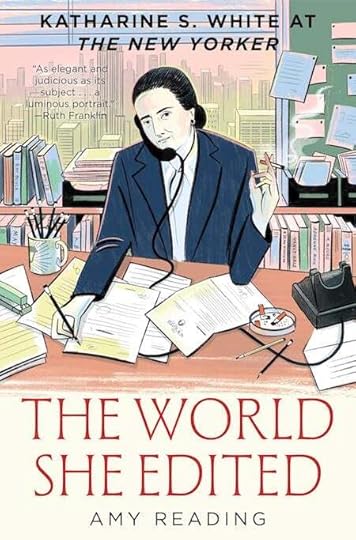
The World She Edited is available on Bookshop.org*, Amazon*,
and wherever books are sold
. . . . . . . . . . .
Praise for The World She Edited“As elegant and judicious as its subject, The World She Edited draws a luminous portrait of Katharine White and her life’s work: making The New Yorker into the cultural powerhouse it would become. White’s creative brilliance as an editor, the care with which she nurtured challenging personal and professional relationships (including with her equally brilliant but sometimes unstable husband), and her central place in the history of American letters have been too little recognized—an injustice that Amy Reading’s essential book has finally corrected.” —Ruth Franklin, author of Shirley Jackson: A Rather Haunted Life
“Amy Reading has recreated a lost, gilded literary world in her smart and evocative biography of Katharine White, the longtime editor at The New Yorker who helped shape postwar American literature. As we read over White’s shoulder, we gain deeper insight into the lives and work of the women writers White cultivated—Elizabeth Bishop, Mary McCarthy, May Sarton, Djuna Barnes, Nadine Gordimer, Jean Stafford, Adrienne Rich, and many others—and that of her husband, E. B. White.
One finishes this book with enormous gratitude for Katharine White’s quiet but fierce commitment to reading, writing, and women, and for Amy Reading’s determination to recognize White’s achievement. Gratitude, too, for all the drama, humor, and literary gossip that make The World She Edited the next best thing to cocktails at the Algonquin.” —Heather Clark, Pulitzer Prize winning author of Red Comet: The Short Life and Blazing Art of Sylvia Plath
“Harold Ross, James Thurber, and E. B. White usually get all the credit for the creation and shaping of The New Yorker magazine. Amy Reading’s book, carefully researched and lucidly written, makes a powerful case that Katharine White was every bit as important. They gave the magazine a tone and a style. She gave it a brain.” —Chip McGrath, former deputy editor of The New Yorker
“This beautifully written book elegantly demonstrates the vital role hidden figures play in shaping cultural taste. New Yorker editor Katharine White encouraged a world of writers – women writers especially – to produce their finest work. This sensitive, compelling book does White justice, revealing the remarkable labor of pulling something better from those who believe they’ve already done their best. American literature as we know it owes Katharine White.” —Carla Kaplan, author of Zora Neale Hurston: A Life in Letters and Miss Anne in Harlem
*These are Bookshop.org and Amazon.com affiliate links. If a product is purchased after linking through, Literary Ladies Guide will receive a modest commission, which helps us to keep growing.
The post The World She Edited: Katharine S. White at The New Yorker appeared first on Literary Ladies Guide.
September 2, 2024
Fascinating Facts About Nadine Gordimer, South African Author & Activist
Nadine Gordimer (1923–2014) was one of South Africa’s foremost authors and anti-apartheid activists. Gordimer’s writing is internationally known for providing a rare window into politics, the human condition, and how they intersect. Mentions of her work can still spark fiery discussions today.
Following are some fascinating facts about Nadine Gordimer, whose work was recognized with the Nobel Prize for Literature in 1991.
Gordimer published her first short story collection, Face to Face, in 1949; her debut semi-autobiographical novel, The Lying Days, was published in 1953. She continued writing prolifically until her death.
Gordimer’s mother founded a daycare in apartheid South Africa
Gordimer found her political and activist roots early in life, starting with her upbringing by parents who had immigrated to South Africa. Her mother, Hannah Gordimer, was a Jewish immigrant from London who had seen her fair share of discrimination.
Hannah Gordimer founded a daycare that accepted children of color, something that was highly unusual — and illegal — for its time.
Growing up in an environment where discrimination and racism held less authority was pivotal in forming Gordimer’s worldview, and eventually inspired much of her work and political activism.
Gordimer started publishing as a teenager
By the time she was a teenager, Gordimer was writing children’s stories for several newspapers, finding her literary beginnings long before her debut stories and novels were published.
Her first short story, “The Quest for Seen Gold,” was published in the Children’s Sunday Express in 1937. Perhaps her upbringing in Springs, a small mining town, had an impact on writing about quests for gold.
She reportedly also drew from her own life for her debut novel The Lying Days (1953), which is considered autobiographical. Like the story’s protagonist, Gordimer moved outside her small hometown to “the big city” later in her life.
. . . . . . . . . .
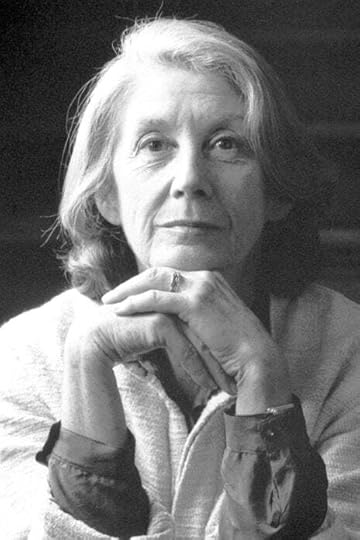
Learn more about Nadine Gordimer
(photo from the Nobel Prize Archive)
. . . . . . . . . . .
Gordimer was one of the authors subjected to apartheid book banning, which made reading or owning any of the listed books a criminal offense.
The Late Bourgeois World was the first book to be banned in 1976, the same year in which the violent Soweto Uprising took place. The apartheid government also banned Burger’s Daughter (1979) and July’s People (1981) soon after their publication.
Gordimer protested the book bans together with other authors, leading to their unbanning just months after the books had been placed on the list. According to the then-government, Gordimer’s books were too ’one-sided’ to continue being controversial. See more in The Banning of Nadine Gordimer’s Anti-Apartheid Novels.
Gordimer maintained a close friendships with Nelson Mandela
Gordimer moved in anti-apartheid and political circles, which formed the foundation for some of her stories. Allies and friendships were especially important to her, as she mentioned the arrest of friends as pivotal to her more serious political activism. That includes one of the reasons she joined the African National Congress (ANC) when it was still a banned organization.
Her friendships with Nelson Mandela’s attorneys, Bram Fischer and George Bizos, would also form a direct inspiration for her later novels.
Gordimer remained connected with Nelson Mandela during the time of his 1962 trial, and advised him on his 1964 trial defense speech. Upon Nelson Mandela’s release from prison, Gordimer was one of the first people he requested to see.
Gordimer’s personal life was the subject of an unauthorized biography
Nadine Gordimer was married twice in her life, first to Gerald Gavron (1949 to 1950), and then to Reinhold Cassirer (1951 to 2001). Her marriages generated plenty of controversy later in her life, becoming the subject of an unauthorized biography.
The biography claimed an affair by Gordimer in the 1950s as well as further claims regarding her second husband’s death: Gordimer immediately pulled her approval for the manuscript, though it was still published as an account of her life in 2006.
. . . . . . . . .
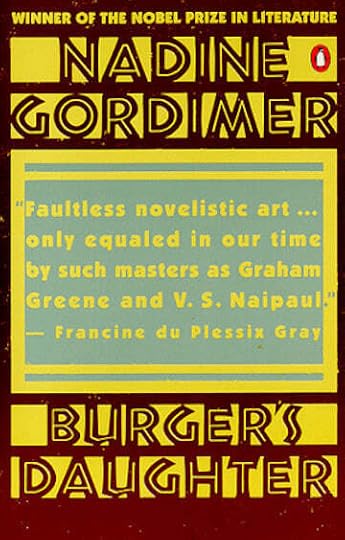
. . . . . . . . . .
Gordimer wrote about post-apartheid South Africa in her “transitional period”Nadine Gordimer went from writing about apartheid to exploring the possibilities within a free and unoppressed South Africa. With a career spanning several decades, Gordimer saw enormous changes in the country.
Her later writing went beyond apartheid themes, including how legal changes affected the average household. In The House Gun, she explored what would happen if a household firearm killed someone — and the novel greatly used the mindset of gun ownership in a political environment as a storytelling tool.
Her further transitional writing explored themes like romance and immigration, branching into the politically-loaded international love story The Pickup (2001).
July’s People was briefly censored again in 2001
Gordimer’s writing wasn’t just banned during apartheid years, but also became a source of controversy in later years: July’s People was removed from school reading lists by the Department of Education in 2001.
According to the department, the book was too controversial for the provincial school curriculum. However, Gordimer was quick to protest the ban, like she had done previously.
. . . . . . . . .
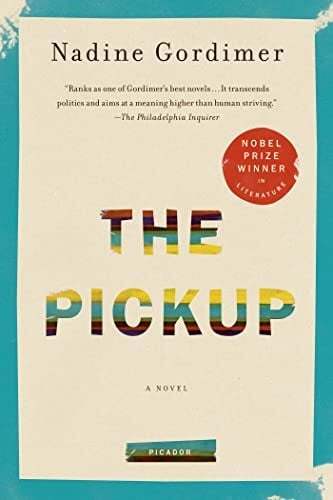
8 Essential Novels by Nadine Gordimer
. . . . . . . . .
Nadine Gordimer spent time as lecturer outside the boundaries of Southern Africa, though she never left the country permanently. She didn’t wish to be cut off from her country of origin.
In the early 2000s, she briefly left Southern Africa and lectured at Massey College at the University of Toronto. However, she eventually returned to South Africa, and continued to live in her Parktown, Johannesburg home until her passing.
No Cold Kitchen is an unauthorized biography of Gordimer’s life
No Cold Kitchen (2006) by Ronald Suresh Roberts is considered an unauthorized biography of Nadine Gordimer’s life. However, it was originally supposed to be a biography written alongside the author, and with her final approval.
Gordimer withdrew her approval for the manuscript’s draft, citing disputes about a 1950s affair and further disagreements about her husband (Kassimer’s) illness and death. In her accounts, Gordimer claimed the book’s author had breached their trust agreement, and refused to grant her approval. However, Roberts went ahead and published the unauthorized biography.
. . . . . . . . . . .
Contributed by Alex J. Coyne, a journalist, author, and proofreader. He has written for a variety of publications and websites, with a radar calibrated for gothic, gonzo and the weird. His features, posts, articles and interviews have been published in People Magazine, ATKV Taalgenoot, LitNet, The Citizen, Funds for Writers, and The South African, among other publications.
Further Reading & Sources Britannica Nobel Prize: Nadine Gordimer Facts University of Johannesburg Special Collections Nadine Gordimer obituary in The Guardian Nadine Gordimer: 5 Essential Reads from the Award-Winning Author Encyclopedia.comThe post Fascinating Facts About Nadine Gordimer, South African Author & Activist appeared first on Literary Ladies Guide.
August 27, 2024
Stevie Smith, English Poet and Author of Novel on Yellow Paper
Stevie Smith (September 20, 1902 – March 7, 1971) was known for satirical poetry as well as novels (including her best known, Novel on Yellow Paper) suffused with black humor, acid wit, and unorthodox contemplations of death.
Vastly different cultural epochs bookended her life. She was born the year after the end of the conservative Victorian Era and died the year after the turbulent “Me Decade”of the 1970s, as author Tom Wolfe dubbed it. (Photo above courtesy of Wikimedia Commons)
As The British Empire lost its colonies and women gained independence, Smith’s poetry tapped into the era’s emotional and societal upheaval.
Early lifeFlorence Margaret Smith was born in Kingston upon Hull, Yorkshire, England in 1902. Her father was a shipping agent, and her maternal grandfather was a maritime engineer. Her parents’ marriage was disastrous, and the year Stevie turned three, her father abandoned the family to pursue a career at sea.
Stevie’s father occasionally appeared on 24-hour leaves or sent the briefest of postcards. She and her older sister Molly refused to meet him in later life or attend his funeral. Stevie later described the rupture with characteristic levity that couldn’t disguise her inner pain:
I sat upright in my baby carriage
And wished mama hadn’t made such a foolish marriage,
I tried to hide it, but it showed in my eyes unfortunately
And a fortnight later papa ran away to sea.
( “Papa Love Baby”)
Another major event in Stevie’s childhood was a diagnosis of tubercular peritonitis at age five, and she was sent to a nursing home for tubercular children, per the custom of the time. When she recovered and returned home three years later, she was thankfully enveloped once again in what she described as a secure “house of female habitation.”
For the rest of her life, Stevie vividly described the terrors of childhood without a whiff of sentimentality. In her persona as a poet, she combined the forlorn air of a “little girl lost” with the cool-headed cynicism necessary to survive as a woman writer.
Stevie, Molly, and their mother moved to a house in the suburb Palmer’s Green in North London, along with their maternal aunt Madge Spear, who was soon dubbed “Lion Aunt.” As their mother declined from the heart disease that killed her the year Stevie turned sixteen, Madge raised her nieces with fierce pride and devotion, even if she did not always understand her niece’s literary bent.
There wasn’t much money, but Lion Aunt insisted on her nieces attending excellent schools, and Smith and her sister enjoyed theatricals, the hymns at church, and trips to the country. The nickname “Stevie” was acquired in her late teens when she was riding with a friend and was compared to legendary horse jockey Steve Donoghue. She kept the moniker for the rest of her life.
. . . . . . . . . .
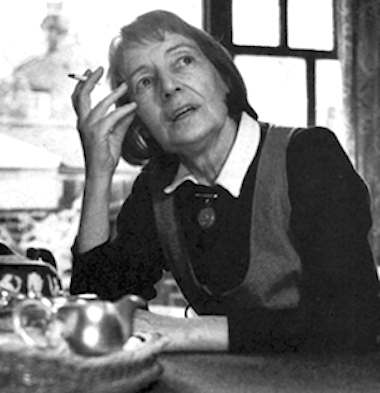
Stevie Smith in 1966 (fair use image)
. . . . . . . . . .
Young adulthood and the start of a career
Stevie described herself as “nervy, bold, and grim.” Her friend and literary executor James MacGibbon described her singular appearance:
“She … dressed with some care in a style of her own which had, at first sight, and specially when she aged, a ‘little girl’ look; but one soon saw that it was perfectly appropriate and never without dignity … her fine-boned features were of a striking beauty that was never more apparent than when death approached.”
Stevie memorably described her appearance in her poem “The Actress”:
I have a poet’s mind, but a poor exterior,
What goes on inside me is superior.
Instead of attending university, Stevie worked as a secretary in a magazine publishing company, where she remained for the next thirty years. She later supplemented her salary by writing book reviews for The Observer, among other prestigious publications. The undemanding job ensured she had time to entertain visiting friends in her office with tea, buttered toast, and strawberry jam, as well as write acerbic poems on the sly.
Stevie remained in the same house for the rest of her life and devotedly cared for her aunt until her death at age ninety-six.
. . . . . . . . .
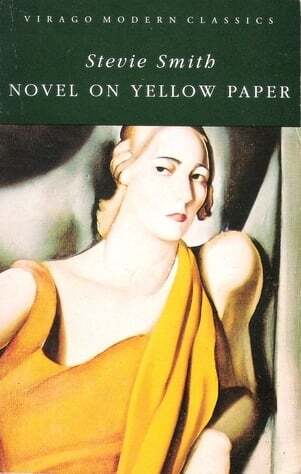
Novel on Yellow Paper (1936)
. . . . . . . . . .
Stevie didn’t gain notice with her first printed poems, and an editor told her to try to write a novel instead. In six weeks, she finished her first, Novel on Yellow Paper, published in 1936. Her first poetry collection, A Good Time Was Had By All, arrived a year later.
When Novel on Yellow Paper was published, it caused a minor furor in the London literary scene. She had come out of nowhere and written a heroine—Pompey Casmilus—who, like Stevie, was a secretary with very determined opinions about seemingly everything that affected an independent young woman in interwar England. Pompey even has opinions about her countrymen and their views:
“One of the greatest qualities which have made the English a great people is their eminently sane, reasonable, fair-minded inability to conceive that any viewpoint save their own can possibly have the slightest merit.”
The London Times Literary Supplement described the debut novel as “a curious, amusing, provocative and very serious piece of work.” Stevie’s subsequent novels, Over the Frontier (1938) and The Holiday (1949), never achieved her original notoriety or varied readership, and Smith appeared happy to return to poetry.
In 1962, Stevie received a letter from another poet, another young woman chafing at society’s expectations, who was looking forward to finally getting to read the novel nearly thirty years after it was first published:
“I better say straight out that I am an addict of your poetry, a desperate Smith-addict. I have wanted for ages to get hold of A Novel on Yellow Paper (I am jealous of that title, it is beautiful, I’ve just finished my first, on pink, but that’s no help to the title I fear) … I am hoping by a work of magic, to get myself and the babies to a flat in London by the New Year and would be very grateful in advance to hear if you might be able to come to tea or coffee when I manage my move—to cheer me up a bit. I’ve wanted to meet you for a long time.”
The letter was from Sylvia Plath, the now-iconic poet and author of The Bell Jar. Sadly, Plath never got to have tea with Stevie — she took her own life less than three months later.
. . . . . . . . . .
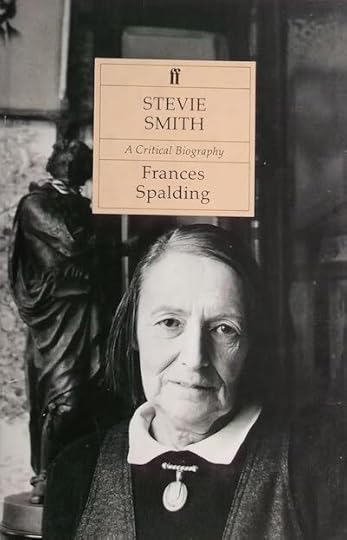
. . . . . . . . . .
Stevie Smith’s poetry, style, and themesWith a typical dry understatement, Stevie detailed her unique views on the craft of poetry in her essay “My Muse”:
“All poetry has to do is to make a strong communication. All the poet has to do is to listen. The poet is not an important fellow. There will always be another poet.”
Stevie trusted her instincts, and early on, she knew which poetry subjects interested her the most and which her style best suited. She rarely wrote of pressing political subjects (although her poem The Leader is a powerful and frighteningly relevant portrait of a Fascist dictator).
She also rarely wrote about romance or happy relationships, finding the travails of modern courtships and marriages — both in the isolated suburbs and crowded cities — more intriguing. In a letter, she bluntly confided, “I don’t much like the ding dong theme of love, love, love.”
Many of her poems are flavored with spiky, biting, black humor. Smith was not interested in sugar-coating anything, and she knew that a laugh or a punchline could get an unpleasant point across. In her (typically cheeky) poem “To an American Publisher,” she retorts:
You say I must write another book? But
I’ve just written this one.
You like it so much that’s the reason?
Read it again then.
Peruse a handful of Stevie Smith’s poems, and you’ll see that, like Emily Dickinson, she flagrantly used hymn meter to structure many of her poems. This stylistic choice enabled many of her poems to have a deceptive simplicity and sense of urgency and make them easier to remember.
I am not God’s little lamb
I am God’s sick tiger.
And I prowl about at night
And what most I love I bite.
from “Little Boy Sick”
Though she appeared very secure in her choice of themes and writing style, Smith still needed reassurance from friends and fellow writers. She once wrote to author Rosamond Lehmann: “I wish there was some litmus paper test you could have for your poems, blue for bad and pink for good.”
Two of the most recurring themes in her poetry are God and death, which are often intertwined in the poems. “You are quite potty about death,” says one of her characters to another in her novel The Holiday. Despite her nearly lifelong agnosticism, she didn’t appear to be afraid of death. Musing on it was a good copy of her poems and the siren call to return to the faith.
“I’m a backslider as a non-believer,” she once described herself. In her poem “God the Eater,” she described the pull of faith:
There is a god in whom I do not believe
Yet to this god my love stretches.
Reverend Gerard Irvine, an unlikely longtime friend, described Smith’s religious beliefs thus:
“In religion, Stevie was ambivalent: neither a believer, an unbeliever nor agnostic, but oddly all three at once…She was scornful of what she considered watered-down reformulations of the faith, and disgusted by their liturgical expression. One could say she did not like the God of Christian orthodoxy, but she could not disregard Him nor ever quite bring herself to disbelieve in him.”
The year before her death, Smith wrote a scathing review of the publication of the New English Bible, describing its translators as “smudgers and meddlers.” She often expressed to friends her love of the King James Version. Again and again, she appears to approach Christianity, only to recoil once again due to the condemnatory doctrine of hell and the hypocritical behavior of many of its followers.
In her poem “Thought About the Christian Doctrine of Eternal Hell,” which is part of her extended essay “Some Impediments to Christian Commitment,” she described her overwhelmingly adverse reaction to organized religion—including its history of using violence to quell dissent and the moral hypocrisy of many of its followers—as such:
The religion of Christianity
Is mixed of sweetness and cruelty…
This God the Christians show
Out with him, out with him, let him go.
Repeatedly, Stevie attested to her love of the figure of Jesus Christ and the stately church ceremonies, but she always withdrew, writing of her conflict with the brutal honesty and reluctant awe of Gerard Manley Hopkins. After the publication of Harold’s Leap (1950), Michael Tatham described her as “one of the few religious poets of our time.”
. . . . . . . . . .

. . . . . . . . . .
Illustrations by Stevie SmithStevie loved decorating her poems with her simple line illustrations. They look deceptively like juvenile stick-figure doodles, but she can ably and disconcertingly depict confusion, malice, and despair in just a few pen strokes.
In his preface to her Collected Poems, James MacGibbon described her poetry as “embroidered” by her illustrations. He said, “If Stevie had taken them more seriously, no doubt these drawings would have made her a renowned cartoonist.”
Stevie was in good company when it came to her unconventional illustrations: William Blake and Ogden Nash often illustrated their poems, and Flannery O’Connor (also eccentric, mordant-witted, and intensely critical of religious hypocrites) seriously considered a career as a cartoonist before turning to fiction.
As it happens often with lifelong unmarried women authors, there are speculations about Stevie’s personal life, and if her writing fulfilled her as much as marriage and children would have done. Regarding children, she once wrote: “I’m very fond of children. Why I admire children so much is that I think all the time, ‘Thank heaven they aren’t mine.’”
There are also lingering questions about whether she had a relationship with George Orwell when they briefly worked together during World War II. (And her book of illustrations—Some Are More Human Than Others—obviously references Orwell’s Animal Farm.) However, Smith had this to say of speculating about the dead who cannot explain or defend themselves:
“Read the stories and the poems the sinners write, but leave their private lives (as we should like our own sinning lives to be left—remembering that equation which cannot truly be cast by any human being) to heaven. So one feels. One may be wrong.”
“Unique and cheerfully gruesome” — success as a poet
In 1953, Stevie attempted to take her own life, and doctors encouraged intensive physical rest. She retired from her publishing job with a good pension and settled into book reviewing and writing poetry full time, with her aunt guarding the door from unwelcome distractions.
A second attempt never occurred, and increasing stature as a poet brought more color and friendships into her life at Palmers Green.
Stevie’s flagrant depiction of friends and acquaintances in her poetry and novels often lost those people as a result, but many more remained. Although devoted to her aunt, Smith enjoyed her jaunts into sophisticated London literary circles and invitations to some of England’s most splendid country houses.
When asked about her motivation for writing, she told her friend John Hayward: “It’s not the fame, dear, it’s the company.”
Her near brush with death gave her plenty of material to draw from, and in 1957, the title poem of her collection Not Waving but Drowning became her most famous and anthologized.
Nobody heard him, the dead man,
But still he lay moaning:
I was much further out than you thought
And not waving but drowning.
Read the rest of this poem here.
In her analysis for the Poetry Foundation, Caitlin Kimball writes that the poem is a “twelve-line punch to the gut” and “one of her most sober and plainly nihilistic pieces…It’s a grim premise: Life is a series of opportunities to be misunderstood.”
For the rest of her career, Stevie wrote about death, viewing it dispassionately as an inevitable conclusion to her life rather than with existentialist trepidation.
Augmented with jabs of humor and unassuming illustrations, Stevie knew that her poems, simple at first glance, could pack a punch. This often resulted in mixed reviews from her contemporaries, but most were cautiously admiring.
“One turns to Stevie Smith and enjoys her unique and cheerfully gruesome voice,” wrote the American poet Robert Lowell.
Critic Linda Rahm Hallett wrote that “the apparent geniality of many of her poems is in fact more frightening than the solemn keening and sentimental despair of other poets, for it is based on a clear-sighted acceptance, by a mind neither obtuse nor unimaginative, but sharp and serious, innocent but far from naive.”
In 1966, Stevie Smith was awarded the Cholmondeley Award for Poets. Along with her poetry collections, she enjoyed having a radio play produced by the BBC and increasing notoriety as a poetic voice for disgruntled nonconformists.
Final years
A doctor once told Stevie that her life “was a failure,” presumably due to her being unmarried and childless. She wrote of loneliness, often the inevitable companion of a writer who willfully rows against the cultural grain. She frequently pointed out the loneliness in mismatched marriages and unhappy families.
Anthony Thwaite, a fellow poet and critic, wrote of her “vast succession of friends, male and female, single and married, literary and non-literary…She was also a copious letter and postcard writer, a keeper-in-touch.”
Her letters reveal the pleasure she took in encouraging and promoting fellow writers’ work, as she wrote to one of them: “I hope you are flourishing and writing like stink.”
In her later years, Stevie gave unusual readings at literary societies and in schools, often chanting her poems in a sing-song voice. She attended a “Psychedelic Feast” poetry event in 1967 alongside much younger Beat poets and was a hit with those in attendance.
In 1968, Stevie lost her “Lion Aunt.” She had left her job to nurse her Aunt Madge and was happy to return the devotion her aunt had showered on her for so long. In Novel on Yellow Paper, Stevie paid tribute to the most steadfast love in her life. “Darling Auntie Lion … You are yourself like shining gold.” Sadly, soon after their aunt’s passing, Stevie’s older sister Molly suffered a stroke.
A year later, Stevie was awarded the Gold Medal for Poetry by Queen Elizabeth II; her friends were amused by varying preposterous descriptions of the royal encounter.
She saw the publication of her ninth poetry collection, The Best Beast, but was soon after diagnosed with an inoperable brain tumor. The battle was mercifully brief, and she passed away on March 7, 1971, at the age of sixty-eight.
The legacy of Stevie Smith
Ogden Nash, a fellow poet born the same year as Stevie, wrote of her when her Selected Poems (1962) was published in the United States:
Who and what is Stevie Smith?
Is she woman? Is she myth?
To say that Stevie marched to the beat of her own drum—both in her poetry and personal life—is an understatement. Her determined commitment to her poetic style and unconventional voice led to a surge of renewed interest in her writing in the 1970s and ‘80s.
Six years after Stevie’s passing, depicted her life with her “Lion Aunt” in his play Stevie, starring the revered actresses Glenda Jackson and .
Whitemore adapted his play for the screen adaptation in 1978, with Jackson and Washbourne reprising their roles. American film critic Roger Ebert was intrigued by Smith’s deceptively uneventful life as rendered by Jackson and gave the film his highest rating of four stars.
Author and critic Rosemary Dinnage long resisted the pull of Stevie Smith’s poetry, believing her to be “affected,” but eventually became an admirer, writing: “the free-floating imagination, the sure instinct for style, above all the deep note of death, death, death sounding through the wispy poems eventually wins one over.”
The revered theologian, social activist, and Trappist monk Thomas Merton was an unlikely admirer of Stevie Smith. “I love her, I am crazy about her,” he wrote, “she is innocent and smashing like a Blake only new, and a lot of pathos under the deadpan sad funny stuff, a lot of true religion.”
Biographer Sanford Sternlicht wrote admiringly of her “profound ability both to verbalize and symbolize the melancholy, the frustration, the rage, and the vengefulness of the intelligent women of her generation.”
Stevie Smith’s writing deserves another revival of interest, as it enjoyed in the 1970s and 1980s. There’s still an audience for those who wish to read about themes such as nonconformity, isolation, and death with a heaping dose of black humor; there are still people who are, as she wrote in her most famous poem, “Too Far Out.”
“The times will just have to enlarge themselves to make room for me, won’t they?” She wrote. Her writing has the potential to inspire hopeful authors (as she once did Plath). On the subject of writing, here is Stevie Smith with her signature self-deprecating humor in “My Muse”:
Why does my Muse speak only when she is unhappy?
She does not, I only listen when I am unhappy
When I am happy, I live and despise writing.
For my Muse this cannot be but disquieting.
. . . . . . . . . . .
Contributed by Katharine Armbrester, who graduated from the MFA creative writing program at the Mississippi University for Women in 2022. She is a devotee of Flannery O’Connor and Margaret Atwood, and loves periodicals, history, and writing.
Further Reading and SourcesIntroduction to Me Again by Jack Barbera and William McBrien“Black Sequins and Seaweed: Stevie Smith” chapter in Alone! Alone! Lives of Some Outsider Women by Rosemary DinnagePreface to Collected Poems by James MacGibbonStevie Smith’s Resistant Antics by Laura SeverinStevie Smith: A Critical Biography by Frances SpaldingStevie Smith by Sanford SternlightBiographical page on the Poetry Foundation website: Analysis of “ Not Waving but Drowning ” by Caitlin Kimball:
Stevie Smith, steel soul of the suburbs article in The Guardian
Poetry Collections
A Good Time Was Had by All (1937)Tender Only to One (1938)Mother, What Is Man? (1942)Harold’s Leap (1950)Not Waving but Drowning (1957)Selected Poems (1962)The Best Beast (1969)Scorpion and Other Poems (1972)Collected Poems (1975)Me Again: Uncollected Writings of Stevie Smith (1981)Novels
Novel on Yellow Paper (1936)Over the Frontier (1938)The Holiday (1949)Other writings
Some Are More Human than Others: A Sketch-Book (Orwellian phrase!) (1958)A Turn Outside (Radio Play, 1959)Cats in Colour (1959)The post Stevie Smith, English Poet and Author of Novel on Yellow Paper appeared first on Literary Ladies Guide.
August 22, 2024
A Sketch of Belle de Zuylen, Age of Enlightenment Writer
What Belle de Zuylen did in 1763 was inexcusable for a young woman. She wrote a novel.
I discovered Belle de Zuylen (1740 – 1805), Dutch-Swiss writer in the age of Enlightenment (also known as Isabelle de Charriére, Belle van Zuylen, Isabella Elisabeth van Tuyll van Seeroskerken, and Zélide) via James Boswell, the 18th-century biographer (The Life of Samuel Johnson) and diarist.
The second book of Boswell’s papers, Boswell in Holland, included his correspondence with de Zuylen. Boswell, a Scot, was studying law in Holland (Scottish and Dutch law apparently being related) and had made her acquaintance.
Boswell was always on the lookout for a rich heiress to marry, and de Zuylen came from a wealthy, aristocratic family. Among other properties they owned a moated castle, now a museum, in which she spent her summers.
Their correspondence began as he was leaving Holland and went on for four years. Frederick Pottle, editor of the Boswell papers, writes that they “may be safely be called one of the oddest series of love letters ever written.”
. . . . . . . . . .
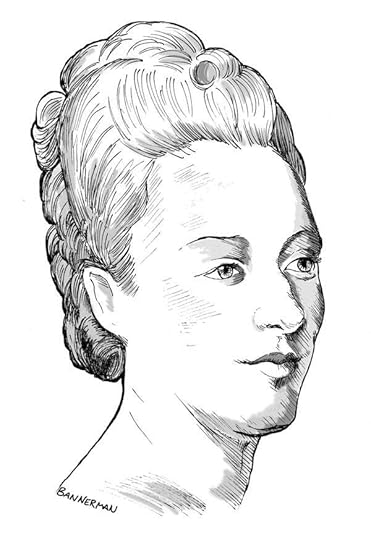
Drawing of Belle de Zuylen by Isabella Bannerman
. . . . . . . . . .
Eventually Boswell proposed to her, in terms he well knew she would never accept. For one, he demanded she take an oath in front of her father, brothers, and Boswell that “without their approbation she would neither publish nor cause to be acted any of her literary compositions.”
It is impossible to imagine her married to Boswell. As she explained to him, “I lack the subaltern talents.” She later continues:
“I have fortune enough that I do not need a husband’s; I have a sufficiently happy cast of mind and enough mental resources to be able to dispense with a husband, with a family, and what is called an establishment. I therefore make no vows, I take no resolutions; I let the days come and go, deciding always for the better among the things which Fate presents to me with some power of choice. I should be glad if time in its flow might carry away my thousand little faults of humor and character which I recognize and deplore. Often my progress does not come up to my good intentions.” (translation from Pottle’s Boswell in Holland)
It is interesting to me to speculate that, had she been miserably married Boswell, she may at least have had the literary support of Samuel Johnson, a champion of many women writers of the time, including Elizabeth Carter, Charlotte Lennox, Elizabeth Montagu, Hester Thrale, Hannah More and Fanny Burney.
There may have been more opportunities for women writers in England than Holland (or Switzerland). To learn more about Johnson’s friendships with women writers, see Norma Clarke’s Dr. Johnson’s Women. Another excellent book on the subject is Wits & Wives: Dr. Johnson in the Company of Women by Kate Chisholm.
Prior to meeting Boswell, de Zuylen had begun a secret sixteen-year correspondence with Constant d’Hermenches, a military officer, actor, musician, and it was said, womanizer. He was 18 years her senior and married. Their correspondence has been gathered and translated by Janet Whatley and Malcolm Whatley in There Are No Letters Like Yours, who describe it as “one of the richest in a whole age of great letter writing.” They are perhaps less love letters than, in time, the writings of two oddly matched, supportive pen pals.
. . . . . . . . . .
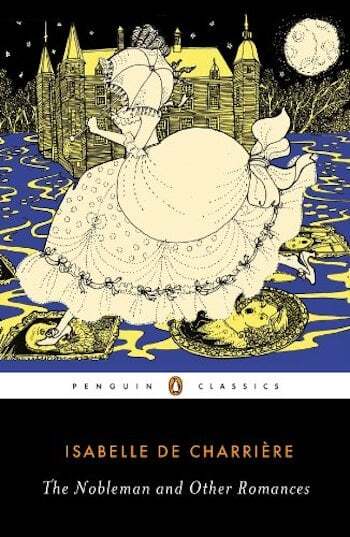
. . . . . . . . . .
In 1762 de Zuylen anonymously published The Nobleman, which was scandalous for two reasons: One, the aristocratic heroine Julie jumps out of the window of her ancient home onto a cushion of ancestral portraits, which she has thrown there herself, the better to elope with her not-aristocratic-enough-for-her-family suitor, Valaincourt.
Sensitive readers should know that they engage in much gratuitous hand-kissing. Two, women weren’t supposed to write novels. It was considered unseemly. And taken as more evidence that de Zuylen, who saw no reason to rein in her opinions, would never be the demure wife sought after in her circles, despite her family name and fortune.
The Nobleman, which in my edition (translated by Caroline Warman) is under twenty pages long, was withdrawn from sale when her parents discovered who had written it—that is to say, they bought up any and all existing copies. Perhaps they are at the bottom of the moat.
She also wrote what Whatley and Whatley call “a provocative literary self-portrait: Portrait de Zélide.” This would become the title of a book published in 1925 by Geoffrey Scott, one that helped revive her fame, at least to some extent. Scott’s book is something to read, a classic and artful and maybe even weird biography. My editions include brilliant introductions by Shirley Hazzard, George Dangerfield, and Richard Holmes, quite the heavyweight trio.
In many ways Scott’s book presents her life as a tragedy, as in his opinion she grew more detached from friends and life (she sure wrote a lot, though). To me, at least, he makes leaps from some of her writing to her state of mind. Good for a biography, perhaps, but maybe it doesn’t tell the full story.
She eventually married her brothers’ tutor, Charles-Emmanuel de Charrière, and they moved to Colombier, Switzerland. This was surprising to many, as he was not of her social class, but she appears to have fallen in love with him, at least for a while, and he was supportive of her writing.
As far as we know, she didn’t have to jump out the castle window onto a pile of family portraits to marry him. She published a novella, Lettres neuchâteloises, Lettres de Mistriss Henley, Lettres écrites de Lausanne, and Caliste, which would become a success (and was written in Paris, a city she did not like).
It was in Paris she met Benjamin Constant, who was twenty-seven years her junior, and the nephew of Constant de Hermenches. They too would have a famous correspondence. He often visited her and her husband in Switzerland, and she responded to his intelligence and wit. He eventually left her for Madame de Stäel, who she despised, dare I opine, rightfully so. Geoffrey Scott makes a great deal of the ending of their correspondence, their break putting her into a self-imposed “icy cage.”
If so it was a cage filled with companions and correspondents, including Henriette L’Hardy, with whom she wrote over 240 letters, and other women friends including Isabel Morel, who became a writer herself. De Zuylan also created many musical works, including an opera-bouffe based on Le Noble, which has been lost.
Belle de Zuylan’s has fascinated critics and readers for decades after her rediscovery in the early part of the 20th century. She is unique in every way, and did everything her way, at a time when women weren’t supposed to pick up a pen. Reading her today, we can be grateful she did.
Further reading
Belle van Zuylen: An Emancipated Woman of the Enlightenment Isabelle de Charrier – Voltaire Foundation Isabelle de Charrier Biography & Facts – BritannicaThe post A Sketch of Belle de Zuylen, Age of Enlightenment Writer appeared first on Literary Ladies Guide.
August 8, 2024
Shakespeare’s Sisters: How Women Wrote the Renaissance – a review
Ramie Targoff begins Shakespeare’s Sisters: How Women Wrote the Renaissance (Knopf, 2024), her fascinating exploration of four female writers of the English Renaissance, not with a reference to a 16th-century woman, but to Virginia Woolf.
The title of Targoff’s book comes from Woolf’s assertion that if Shakespeare had had a sister, whom she names Judith Shakespeare, who shared his talent for writing, she never would have been able to achieve anything like her brother’s success, given the oppressive conditions women faced in sixteenth and seventeenth century England.
In fact, Woolf claims, she would have “gone crazed, shot herself, or ended her days in some lonely cottage outside the village, half witch, half wizard, feared and mocked at … so thwarted and hindered by other people … she must have lost her health and sanity.”
Targoff doesn’t dispute the limitations placed on women in Shakespeare’s England. She recognizes that the vast majority of women were barred from educational opportunities. If married, they were not allowed to own property. Nor could they vote nor hold political office, or become lawyers, doctors, or actors.
Even so, Targoff contends, there were women who managed to write, who were in fact, despite restrictions and obstacles, driven to write, and not just write but to challenge some of the assumptions of the world in which they lived by writing poetry, history, religious texts, and plays.
Four Remarkable Women
Ramie Targoff focuses her book on four of these remarkable women—Mary Sidney, Æmilia Lanyer, Elizabeth Cary, and Anne Clifford—and in doing so, invites readers to see the history of women’s literature with fresh eyes. The work of these women was literally lost for centuries—and as a result it was not discussed, not taught—even in academic programs focusing on this era.
Recognizing the work of these women, Targoff argues, changes our perception of women’s literary history and of the possibilities for women writing today. Unlike others of their time and place, whether through social status or through sheer luck, they succeeded in what was an excellent education for their time. Some even managed to become significant property owners.
Their work is important not simply because they were women and writers, but because they shared their perspective as women, questioning the patriarchal structures that ruled their lives and bringing the lives of women to the forefront. And these women challenged these structures not only through what they wrote, but also in the ways they lived their lives.
The Death and Funeral of Queen Elizabeth I
Targoff begins her account of the literary careers of Sidney, Lanyer, Cary, and Clifford in 1603, with a vivid description of Queen Elizabeth I and the aftermath of her death. Thirteen-year-old Anne Clifford’s mother Margaret was among those who sat up with the Queen’s coffin for several nights during the many weeks it lay in state before burial.
Æmilia Lanyer’s father, a musician in the Queen’s court, marched in Elizabeth’s funeral procession, as did newly married Elizabeth Cary’s father-in-law, Sir Edward Cary, the Master of the Jewel House.
Mary Sidney’s son, the Earl of Pembroke, carried the Great Banner of England hat day. Right behind him, four horses pulled an open chariot that carried the queen’s velvet-draped coffin, a life-size wax-and-wood effigy atop it.
Thus the lives of all four of these women were closely linked to that of the queen. Yet Targoff warns against any assumptions regarding the role of this powerful woman on any sense of entitlement on the part of these four women. She makes it clear that Elizabeth was “both a woman and more than a woman, or not woman at all.” She refused to become a wife or a mother.
She never experienced the lack of power and agency over her body or her property that affected her female subjects. “I know I have the body but of a weak and feeble woman,” she famously said, “but I have the heart and stomach of a king.”
Nor did she look for ways to identify with the women of her realm: “Thou has willed me,” she wrote in a prayer she published in 1563, “to be not some wretched girl from the meanest rank of the common people who would pass her life miserably in poverty and squalor, but to a kingdom.”
In other words, the concerns of ordinary women were not the concerns of Elizabeth. But Clifford, Lanyer, Cary, and Sidney, though they married and bore children, were like the queen in one important way: like Elizabeth, all were widely read and highly educated.
Interconnected Lives
The lives of these women were interconnected, even beyond their shared proximity to the queen. Mary Sidney’s writing was cited as an inspiration by Æmelia Lanyer; Lanyer served briefly as Anne Clifford’s tutor.
And yet they came from different economic strata of their era: Anne Clifford came from the highest levels of wealth and aristocratic background; Mary Sidney, who was descended from an aristocratic mother and a bureaucrat father, married into another aristocratic family despite her father having to go into debt to cover her dowry.
Æmelia Lanyer was the daughter of a court musician and married the same, but only after becoming pregnant by her lover, one of Queen Elizabeth’s cousins. Elizabeth Carey’s father had no aristocratic connections, yet he accumulated significant wealth through his legal practice.
With the exception of Anne Clifford, all were able to read and write in multiple languages, including French, Latin, and Italian. Clifford was highly educated as well, but her xenophobic father forbade her learning any language other than English.
. . . . . . . . . .
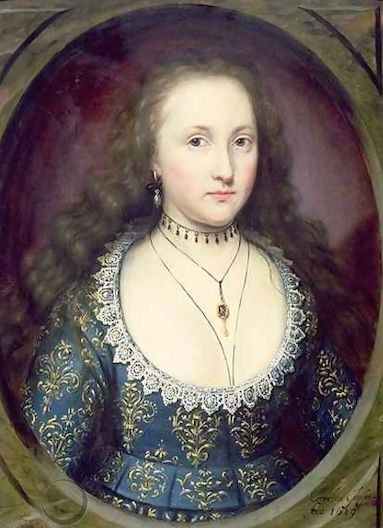
. . . . . . . . . .
Mary Sidney, Countess of PembrokeMary Sidney (1561– 1621) first took over the work of her brother, a poet, completing and polishing work he had started but had yet to publish at the time of his death.
But she went beyond his work, expanding on his translations of the first 43 Psalms to complete all 150, and thus becoming the first person to translate the Book of Psalms into English at least a decade before publication of the King James Bible in 1611.
Sidney didn’t just translate the Psalms; some refer to her work as paraphrasing, because she added numerous literary elements and perspectives. Rather than supplying a simple literal translation, she included additional lines which reflected at times on the perspective of women.
. . . . . . . . . .
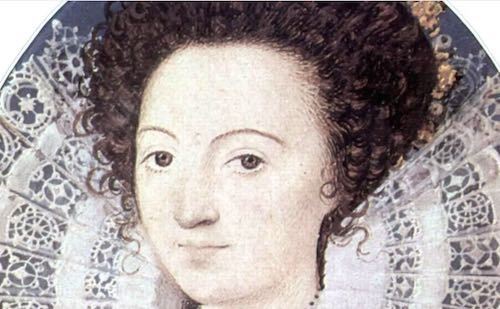
. . . . . . . . . .
Æmelia LanyerÆmelia Bassano Lanyer (1569–1645) is credited with having written the first “country house” poem written in English. A “country house” poem was one written in praise of a house, its inhabitants, and its surroundings—the house she praised was that of the Margaret Clifford, mother of Anne Clifford.
By 1611, the year when the King James Bible first appeared in print, she had become the first woman in the 17th century to publish a book of original poetry, Salve Deus Rex Judaeorum. Part of Salve Deus is narrated by the wife of Pontius Pilate, who warns her husband that he will be killing the son of God if he allows Christ to be crucified. She then argues that if men crucify their savior, women should be exempt from their patriarchal rule
. . . . . . . . . .

. . . . . . . . . .
Elizabeth Cary, Viscountess FalklandElizabeth Cary (1585–1639) was the first woman in England to publish an original play. The Tragedy of Mariam portrays the wife of Herod, falsely accused of infidelity, as a heroic figure. She proclaims her own innocence in a time when wives were barely allowed to speak on their own behalf, much less contradict their husbands.
Elizabeth was never comfortable with the Protestantism of England. After she converted to Catholicism, she was placed on house arrest and driven out of her husband’s household. Unbowed by the punishment for her religious views, she translated a French text, A Reply of the most illustrious Cardinal of Perron to the answer of the King of Great Britain.
. . . . . . . . . .

. . . . . . . . . .
Anne Clifford, Countess of Dorset, Pembroke and Montgomery;14th Baroness de Clifford
Anne Clifford (1590–1676) was a woman who believed in the importance of her own life and went to the trouble of recording it. Few women of this era kept diaries, and those who did tended to simply list their activities and prayers.
Clifford recorded her thoughts and reactions and engaged in self-reflection, making her the most important female diarist of her time. In 1923, her descendant Vita Sackville-West published her surviving diaries and a 1603 memoir under the title The Diary of Anne Clifford, with a Long Preface.
In 1649, Clifford wrote another memoir, The Life of Me, covering her life from 1590–1649, and she chronicled her family’s history in the Great Books of Record. This collection of over one thousand oversize pages is a history of the Clifford estate and dynasty, including short biographies of each of her ancestors.
She gave special attention to her female forebears, and transcribed numerous charters, royal grants, petitions, deeds, wills, and any other documents that confirmed that women had been the source of much of the property of this extremely wealthy family.
Structure of Shakespeare’s Sisters
Targoff made what seems to me to have been an unusual choice in the structuring of her account of these four women’s and their achievements. Their lifespans overlapped, and Targoff proceeds chronologically cutting back and forth among the women.
This was an intriguing approach but made a confusing read. It wasn’t easy for me, at least, to keep track of which woman I was reading about as we moved from one character to another in each chapter. Targoff could have employed other techniques to help readers keep track of these thematically connected lives.
For example, she includes several pages of Family Charts in the book’s front matter. These would have been far more useful had some dates (even if not exact) had been included. Likewise, a page of timelines of the four women’s lives would have been extremely helpful.
Targoff’s account ends by reflecting on her own experience as a Yale undergraduate and then as a graduate student at Berkeley immersed in Renaissance literature. During her studies, she never read anything written by a woman before 1800 and assumed that Virginia Woolf was right when she said that no woman of Shakespeare’s era could have been a writer.
She takes some responsibility for this: she never asked one of her professors about women writers of this era. Yet she suspects that even if she had raised the issue, she would not have found out about the women in this volume.
. . . . . . . . . .
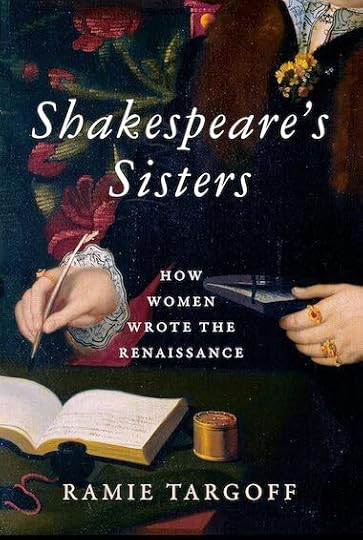
. . . . . . . . . .
Feminist ScholarshipWhat changed? Targoff credits the work of a number of feminist scholars with the increased visibility of these women. She cites in particular Margaret W. Ferguson, Margaret P. Hannay, Jessic L. Malay, Leah S. Marcus, Janel Mueller, Heather Wolfe, and Susanne Woods. I would have liked more details about what exactly these researchers have done.
She mentions that a number of the works produced by these women were finally made available to the general public in the 1990s. These include The Diaries of Lady Anne Clifford; Lanyer’s Salve Deus, Carey’s Tragedy of Mariam and her biography, The Lady Falkland, written by her daughters; and The Collected Works of May Sidney Herbert, Countess of Pembroke.
Publication of these works laid the groundwork for further research, and since then, Targoff says, there have been numerous dissertations, anthologies, and scholarly articles about these women and others of their era.
Some of these works are starting to make their way into the occasional syllabus, but Targoff points out that it is still quite possible for a student to graduate with a degree in English without knowing anything about these women or any of the others who wrote in this era.
By extension, she says, many of those who study and read about this era of English history and literature know very little about the experiences and perspectives of the women who lived through it.
Access to such information, Targoff argues, has the potential to provide models and inspiration for women writing today. Access to such works, in fact, might have led Virginia Woolf to more fully imagine her Judith Shakespeare and give her greater possibilities than Woolf had previously considered.
. . . . . . . . . .
Contributed by Lynne Weiss: Lynne’s writing has appeared in Black Warrior Review; Brain, Child; The Common OnLine; the Ploughshares blog; the [PANK] blog; Wild Musette; Main Street Rag; and Radcliffe Magazine. She received an MFA from the University of Massachusetts at Amherst and has won grants and residency awards from the Massachusetts Cultural Council, the Millay Colony, the Vermont Studio Center, and Yaddo. She loves history, theater, and literature, and for many years, has earned her living by developing history and social studies materials for educational publishers. She lives outside Boston, where she is working on a novel set in Cornwall and London in the early 1930s. You can see more of her work at LynneWeiss.
The post Shakespeare’s Sisters: How Women Wrote the Renaissance – a review appeared first on Literary Ladies Guide.
August 5, 2024
The Paris Bookseller by Kerry Maher – a novel of Sylvia Beach
The Paris Bookseller by Kerry Maher is a novelization of the life of Sylvia Beach, who in 1919 cofounded the legendary bookstore Shakespeare and Company. She’s also known for publishing Ulysses by James Joyce in 1922, at great personal and financial risk.
This review of The Paris Bookseller is contributed by N.J. Maher, from her site, Herstory Revisted: Biofiction Book Reviews. Reprinted by permission.
Certain people stick with you, whether you meet them in person, or, as with historical fiction, you meet them on the page. Such is the case for me with the protagonist in The Paris Bookseller, by Kerri Maher. It isn’t often a reader gets a front-row seat to a period in literary history, but Maher gives us one through Sylvia Beach, an American living in post-World War I Paris.
The book’s title hooked me before I opened the covers and smelled the familiar scent of fresh ink on pristine paper, before I ran my fingertips across the smooth, glossy jacket. I am a glutton for books. Some women go for shoes, but catchy titles and alluring cover art seduce me. I suppose that makes me a sinner and bookstores my house of ill repute. I love bookstores.
The Paris Bookseller reminded me just how special a bookstore is and why I appreciate bricks and mortar as compared to ordering online. I do my share of that, too, but it doesn’t result in the same experience. An actual store surrounds book lovers with something irresistible: books and like-minded individuals who value and appreciate the printed word as much as they do. Everyone inside those walls is a kindred soul.
. . . . . . . . . . .
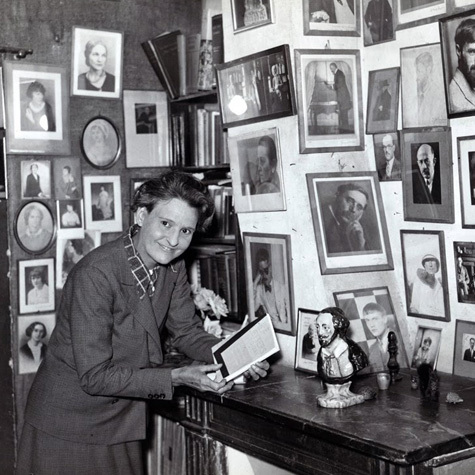
Sylvia Beach: Legendary Paris Bookseller and Publisher
. . . . . . . . . . .
The digital age has robbed us of that kind of gathering space. I don’t want to take away anything from the online book groups I belong to. The energy is invigorating. And I’m thrilled at the number of authors we can interact with on Zoom these days. Woo-hoo! At least one good thing came out of the pandemic.
Libraries offer book lovers a similar experience to a bookstore, and to them, I offer a hearty shout out as well. But, if possible, I like to own my books. When I read a book, a part of me goes into that story, and the story becomes a part of me. The characters and I become intimate friends. I memorialize the setting in my mental travel log. The Paris Bookseller now occupies a place on my shelves and in my heart.
As the novel opens, Sylvia Beach (1887–1962) is living in Paris, in search of her next adventure. In due time, she opens Shakespeare and Company, a bookstore and lending library specializing in books written in English. In creating a space for readers to gather, she inadvertently creates a meeting place for writers.
Members of the so-called Lost Generation trickle in. Word spreads, and soon, expatriates like Ernest Hemingway, Gertrude Stein, and Ezra Pound (the list is long) become friends with Sylvia, and sometimes, allies. There are the noteworthy Parisians as well.
The focus of Sylvia’s attention, however, is James Joyce, the writer from Ireland working on a new book called Ulysses. When Sylvia meets him, Joyce is serializing Ulysses it in an American literary magazine as he writes called The Little Review.
But when a successful suit is filed in New York against Ulysses for being “obscene,” the United States bans any further publication or distribution on its soil. The United Kingdom also bans Ulysses, effectively barring Joyce from two gigantic markets. In the aftermath, Joyce finds it impossible to find a publisher for the finished book.
Though an odd twist of fate, Beach agrees to publish Ulysses, launching her on a journey she never imagined taking, one that eventually turns her into one of the literary world’s greatest heroes.
So, who was Sylvia Beach?Sylvia was born Nancy Woodbridge Beach in Baltimore, Maryland in 1887. She grew up primarily in New Jersey, and in high school she changed her name to Sylvia. Her father was a Presbyterian minister, and her mother had been raised in a missionary family in India. Both parents held very open world views, which they seemed to transmit to Sylvia.
Sylvia first moved to Paris in 1901 when her father became a minister at the American Church. She fell in love with the famed city and its people and, though her family moved back to America, she would return to Paris at every chance. She eventually took up residence there. During World I, she performed relief work and later was a volunteer for the Red Cross in Serbia.
Sylvia approached managing her bookstore the same way she approached life: with eyes and arms wide open. In his book, A Moveable Feast, Ernest Hemingway wrote of Beach:
“Sylvia had a lively, sharply sculptured face, brown eyes that were as alive as a small animal’s and as gay as a young girl’s… She was kind, cheerful and interested, and loved to make jokes and gossip. No one that I ever knew was nicer to me.” [1]
Sylvia kept few records and spent most of her time talking with her patrons. She enjoyed people and went out of her way to help them. The list of writers and artists she met and became friends with is a veritable list of who’s who in twentieth-century literature. Hemingway, F. Scott Fitzgerald, André Gide, and composers like George Antheil and Aaron Copland were regulars.
It wasn’t all about books, however. Sylvia fell in love with Paris bookstore owner Adrienne Monnier, and the two enjoyed a Roaring Twenties’ social life. In Paris, gay, lesbian, bisexual, and queer individuals were free to live and love openly. Sylvia’s relationship with Monnier is a central theme in The Paris Bookseller.
In 1959, Sylvia wrote her memoir, Shakespeare and Company. She passed away in 1962. The following anecdote included on the current Shakespeare and Company’s website seems to tell us a lot about the kind of person Sylvia Beach was:
“Beach’s bookstore was open until 1941, when the Germans occupied Paris. One day that December, a Nazi officer entered her store and demanded Beach’s last copy of Finnegans Wake. Beach declined to sell him the book. The officer said he would return in the afternoon to confiscate all of Beach’s goods and to close her bookstore. After he left, Beach immediately moved all the shop’s books and belongings to an upstairs apartment. In the end, she would spend six months in an internment camp in Vittel, and her bookshop would never reopen.” [2]
Ernest Hemingway is said to have liberated her bookshop in 1944. [3] Whether that is true, it sure has a nice symmetry to it.
My takeaway in reading both fiction and nonfiction about Sylvia is that she was a woman with great drive, vision, and compassion. And she was the unsung hero behind a major book event during the twentieth century. Yet we know so little about her. While researching this article, I found it difficult to find biographical information about her.
How many other women have we missed giving credit to in history?
. . . . . . . . . . . .
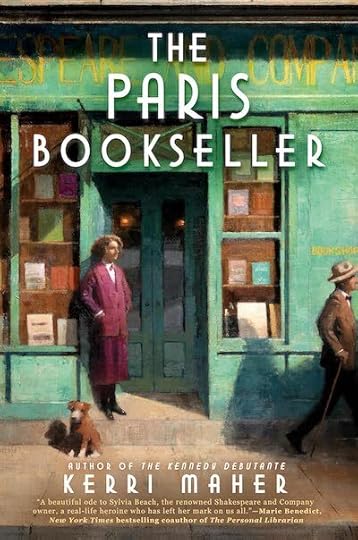
. . . . . . . . . . . .
The Paris BooksellerIn my posts about books, I try to avoid spoilers. I prefer to encourage you to read them for yourself. But there are a couple of things worth noting as you consider picking up this title.
Kerri Maher did an excellent job researching content for The Paris Bookseller. She sticks to the facts and blends them into the story. The engaging way she does this makes you want to learn more about her characters and the era.
The novel is about Sylvia Beach and about her efforts to publish James Joyce’s novel, but frequent appearances of famed authors make it also about The Lost Generation living in Paris. Maher presented these iconic figures in a way that is more than name dropping. The snippets of their comments and visits, imagined by the author, are authentic and entertaining.
The themes in The Paris Bookseller are timeless, the first among them censorship. In the book and in real life, Sylvia Beach defied the ban against Ulysses and published it, then took things a step further and smuggled the book into the United States and England. Sylvia dubbed herself a “booklegger.” The word was a take on “bootlegger.”
In 1917, Congress had passed the Volstead Act as the 18th amendment to the U.S. Constitution. When enough states ratified it a little over a year later, it prohibited alcohol in the United States. As you can see, Sylvia had a sense of humor.
Besides the Volstead Act, Sylvia was also up against the Comstock Law, which criminalized using the United States’ mail service to “corrupt public morals.” Also known as the “chastity law,” it forbade selling or distributing materials in the U.S. mail—or to import them from abroad—that could be used for contraception or abortion purposes.
Ulysses fell into this category. History credits the wave of conservative laws like the Volstead Act and the Comstock Law for driving so many of America’s talented artists and writers to places like Paris, where their art could flourish unencumbered by restrictive norms and policies during the twenties.
Another important theme of The Paris Bookseller is love. In the first pages of the novel, Sylvia meets the enchanting Adrienne Monnier, who owns a bookstore. With Adrienne, Sylvia explores her sexuality while working her way through becoming a businesswoman. In America, Sylvia could never have lived so openly with another woman. Paris allowed her to do that, and more. She could surround herself in a vibrant, welcoming community.
And like modern women, the demands on Sylvia stretch her in dizzying directions, forcing her to choose between what is most important. She struggles to set aside time for herself at the eventual expense of her health. Who among us can’t relate to that?
. . . . . . . . . . . .
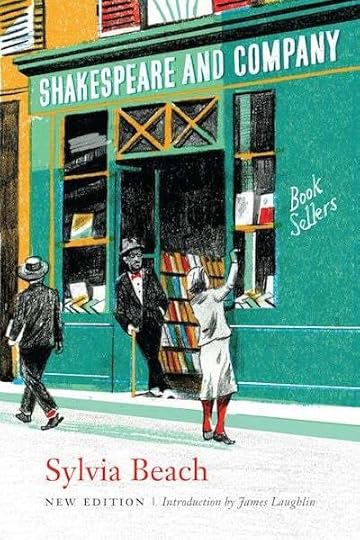
Sylvia Beach’s own memoir, originally published in 1959
. . . . . . . . . . . .
I highly recommend The Paris Bookseller. An informative and entertaining read, it will leave you scouring the web for more details about Sylvia Beach, the era, and the causes this fascinating woman championed. The timing for reading this book couldn’t be better. February 2022 marks the one hundredth anniversary of the publication of Ulysses. It’s hard to comprehend that this many years later, books are still being banned.
Sylvia’s is a story of triumph at a time when women had very little room to maneuver outside the stranglehold of tradition. Here you’ll find some terrific images of Sylvia and of the old Shakespeare and Company. The pictures and anecdotes present a story unto themselves and make the past feel so much closer, so much more real.
Shakespeare and Company remains open today, but in name only. The store is under different management. The owner, however, honors Sylvia as its founder. This type of nod to history warms my heart, and I’m adding the bookstore to my list of places to visit one day.
Sources
Francis Booth. “ Sylvia Beach: Legendary Paris Bookseller and Publisher .” Literary Ladies Guide. May 30, 2021. Rachel Potter. “ Ulysses at 100: why it was banned for being obscene .” The Conversation. February 1, 2022. Samantha Barbas. “ How the banning of Joyce’s Ulysses let to ‘the grandest obscenity case in the history of law and literature .” June 22, 2021. Shakespeare and Company. “ History: Sylvia Beach’s Shakespeare and Company, 1919-1941 .” Accessed February 8, 2022. Mantex. “ Sylvia Beach .” Accessed February 8, 2022.Footnotes
[1] Shakespeare and Company. “History: Sylvia Beach’s Shakespeare and Company, 1919-1941.” Accessed February 8, 2022.
[2] ibid
[3] https://en.wikipedia.org/wiki/Sylvia_...
The post The Paris Bookseller by Kerry Maher – a novel of Sylvia Beach appeared first on Literary Ladies Guide.



